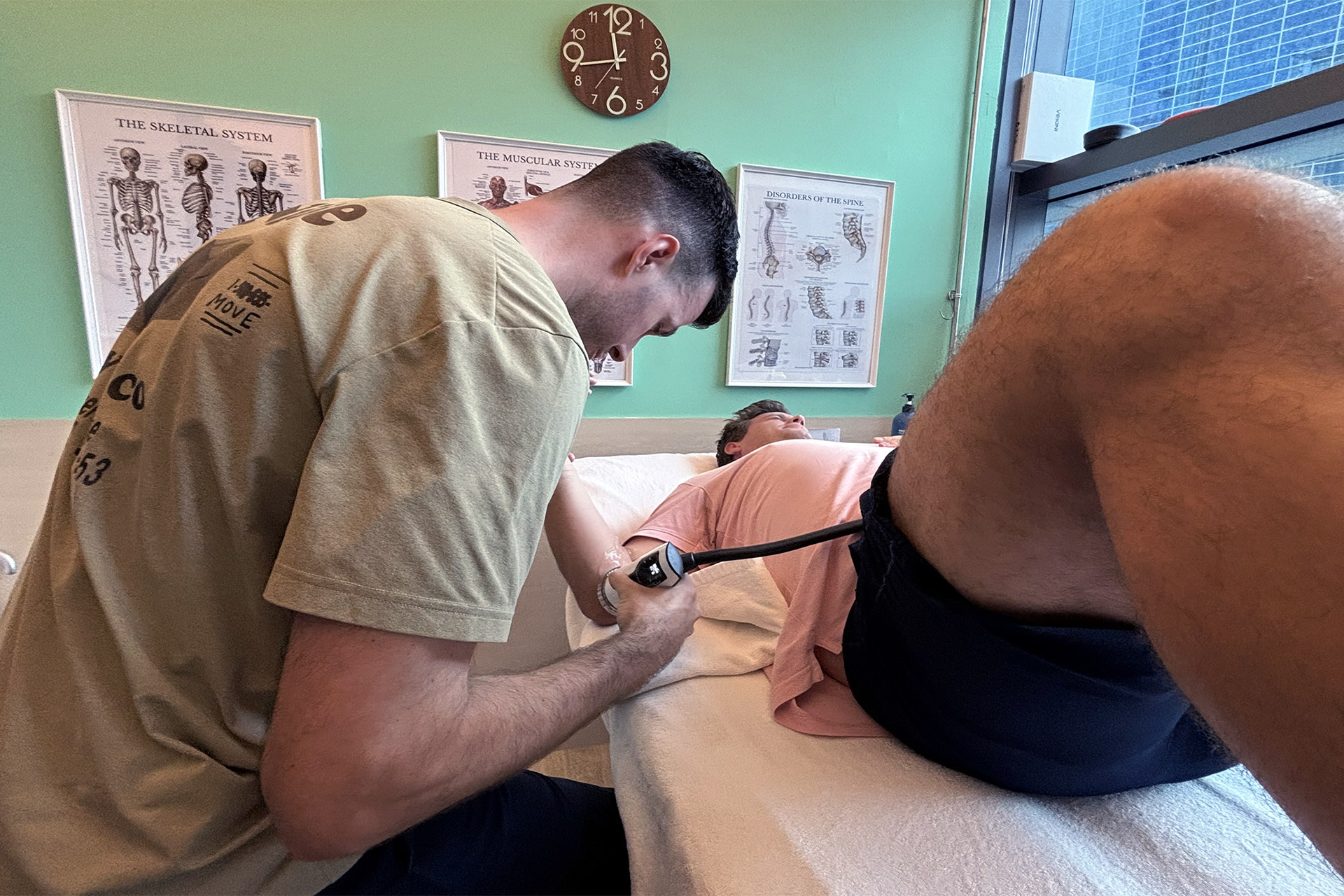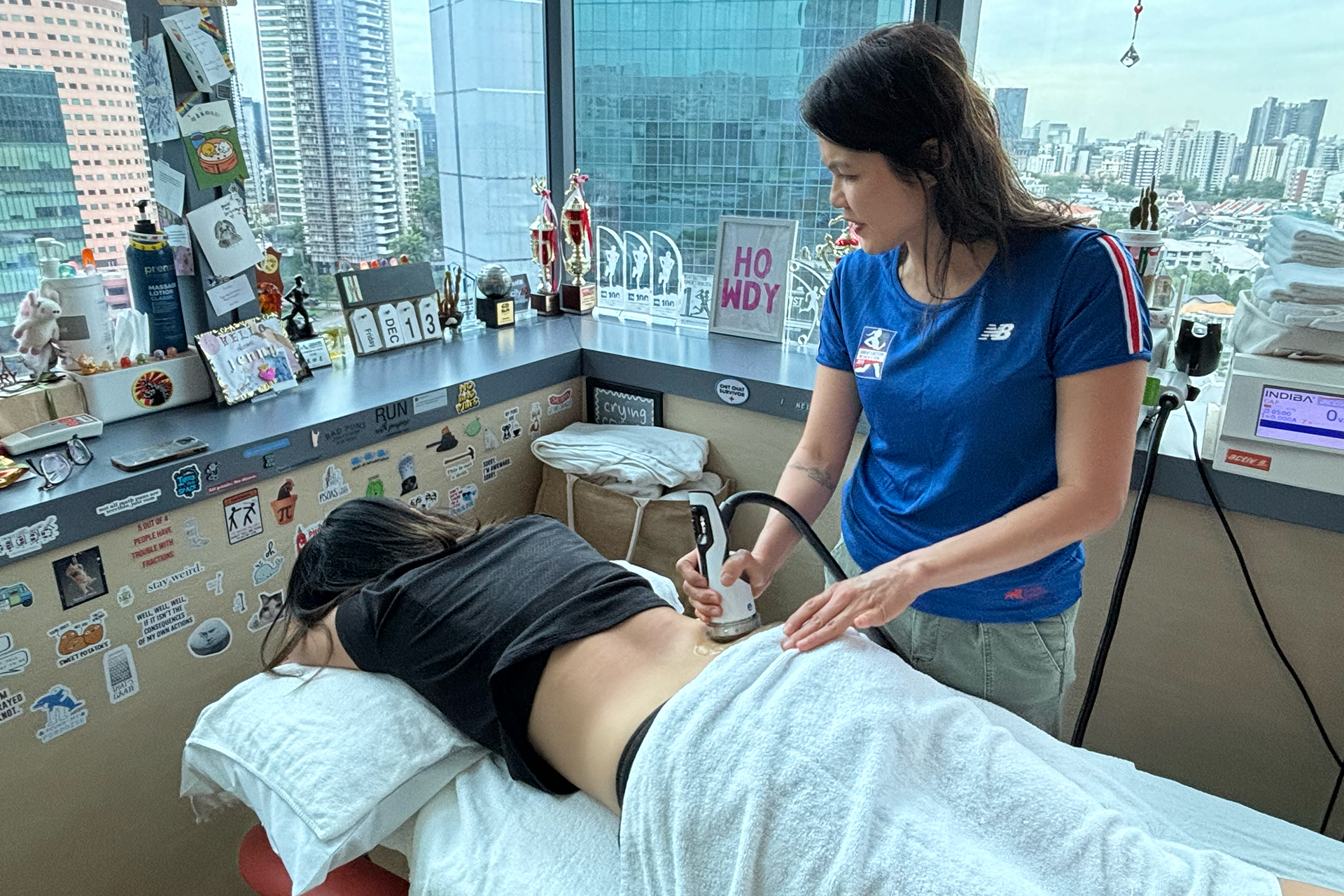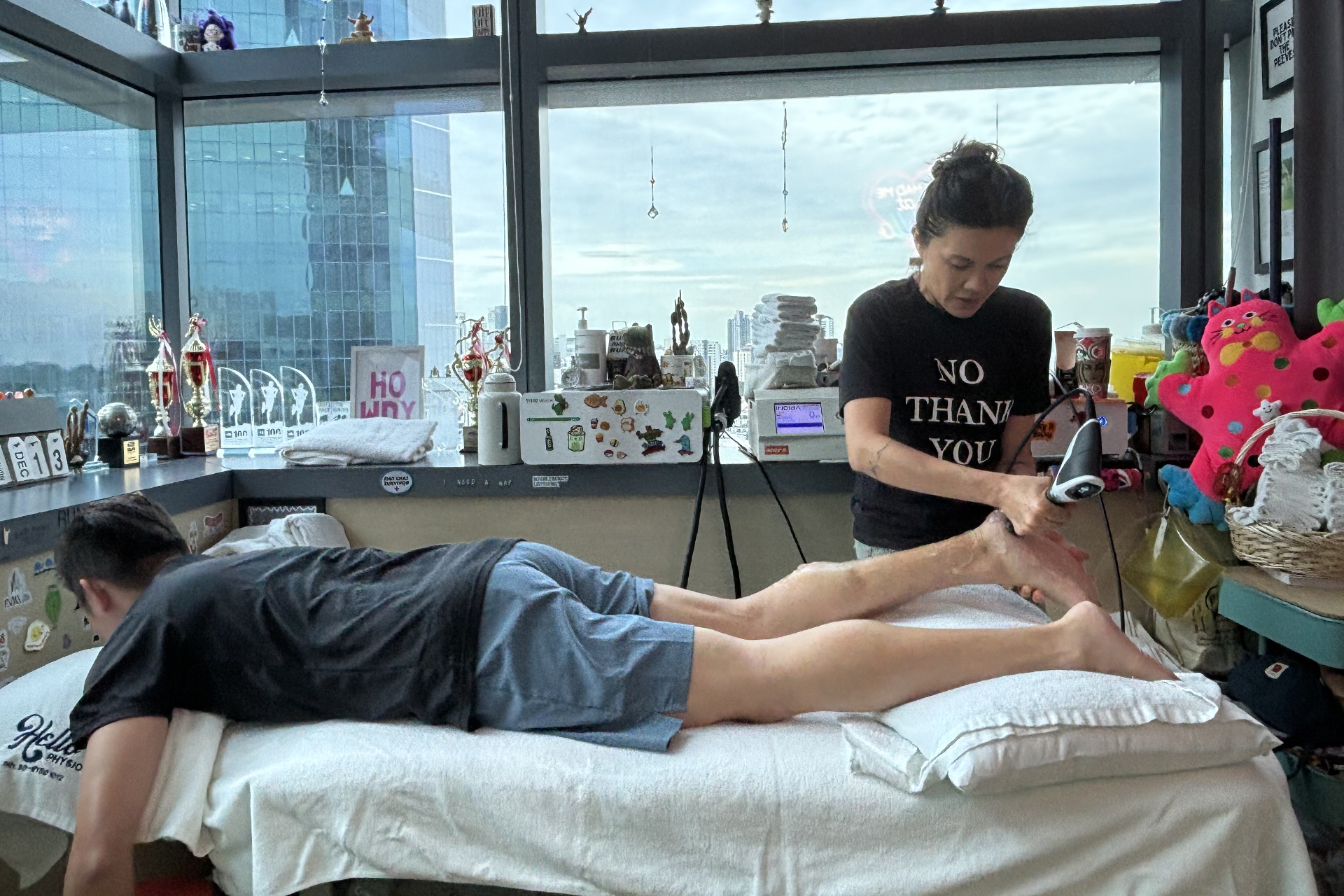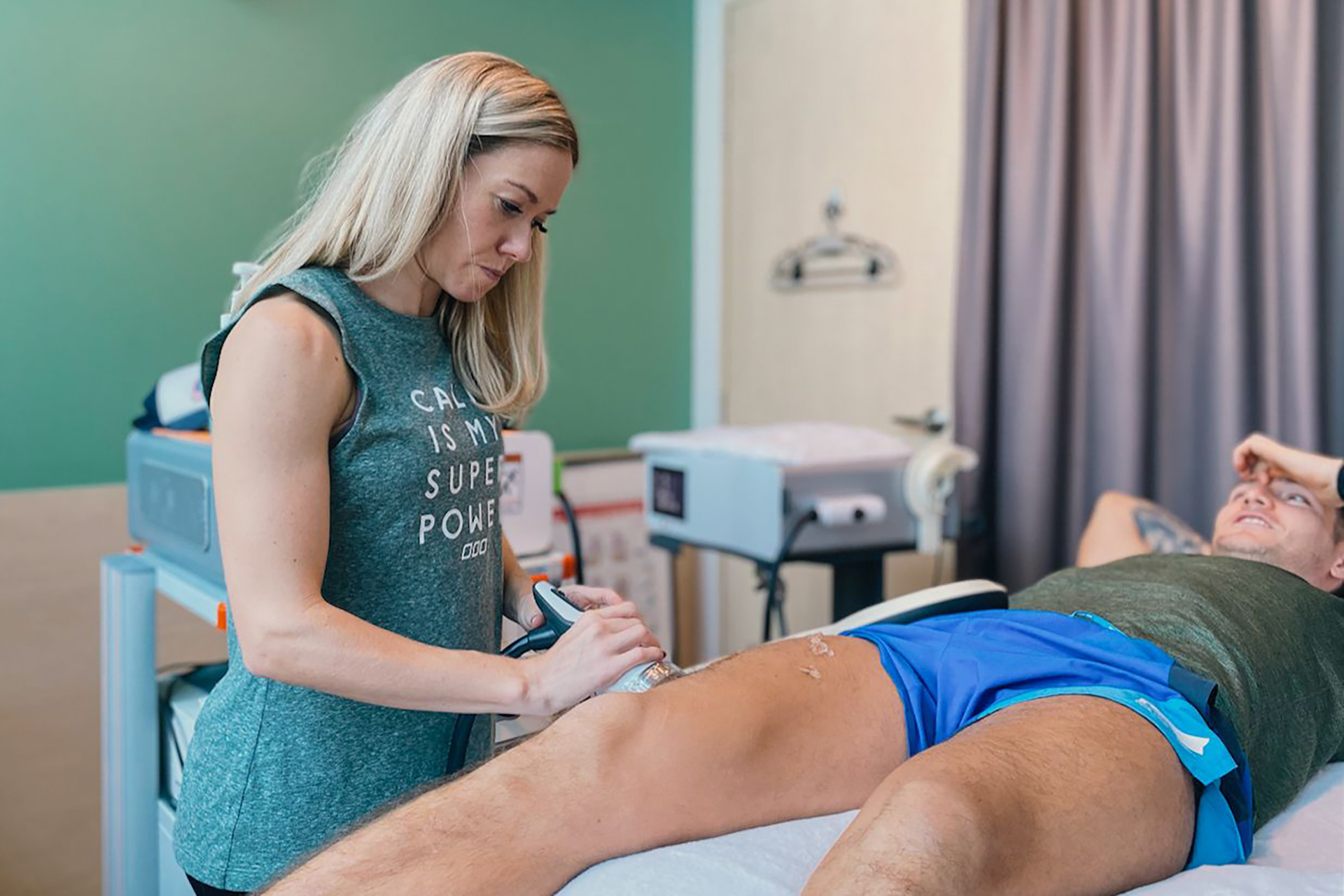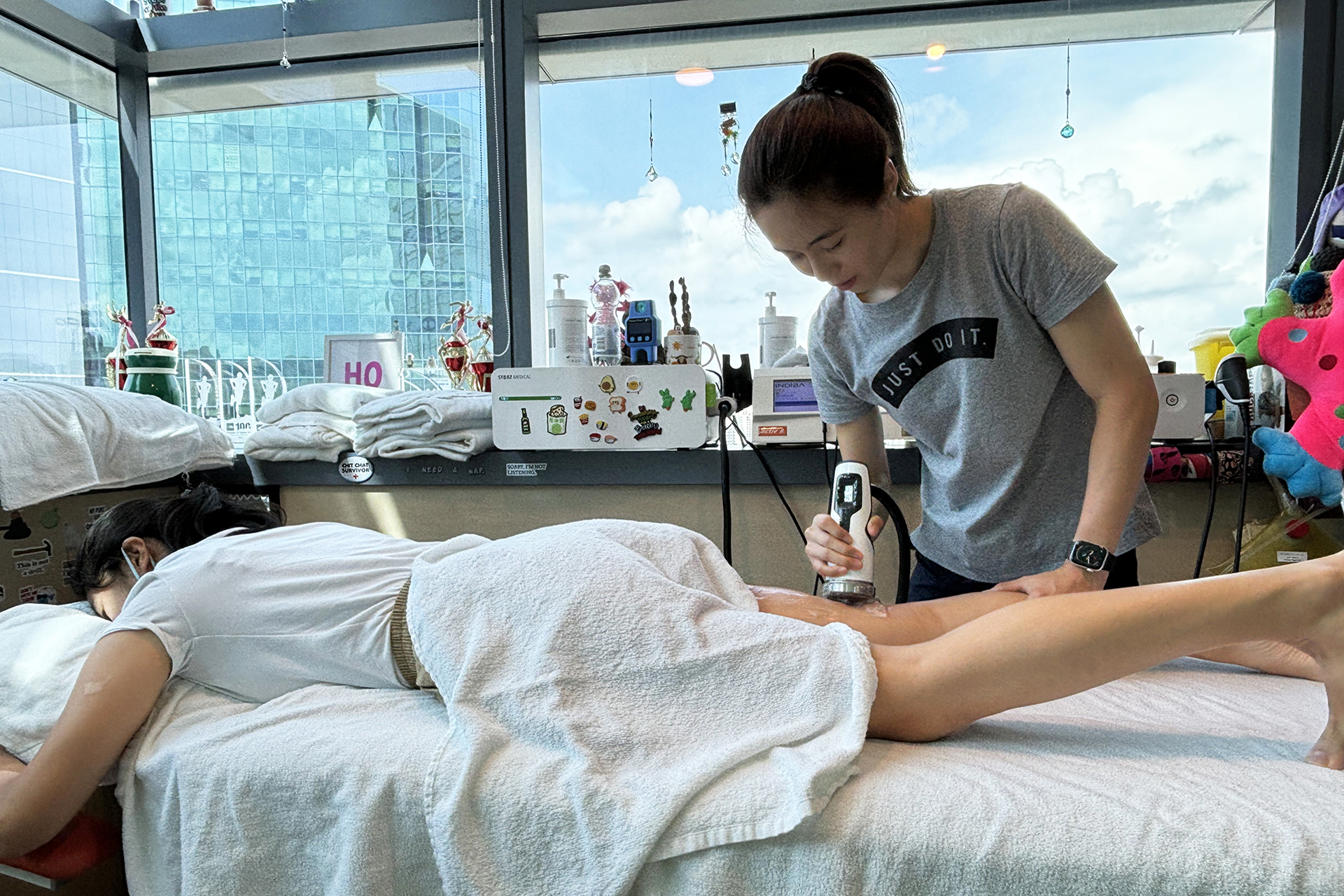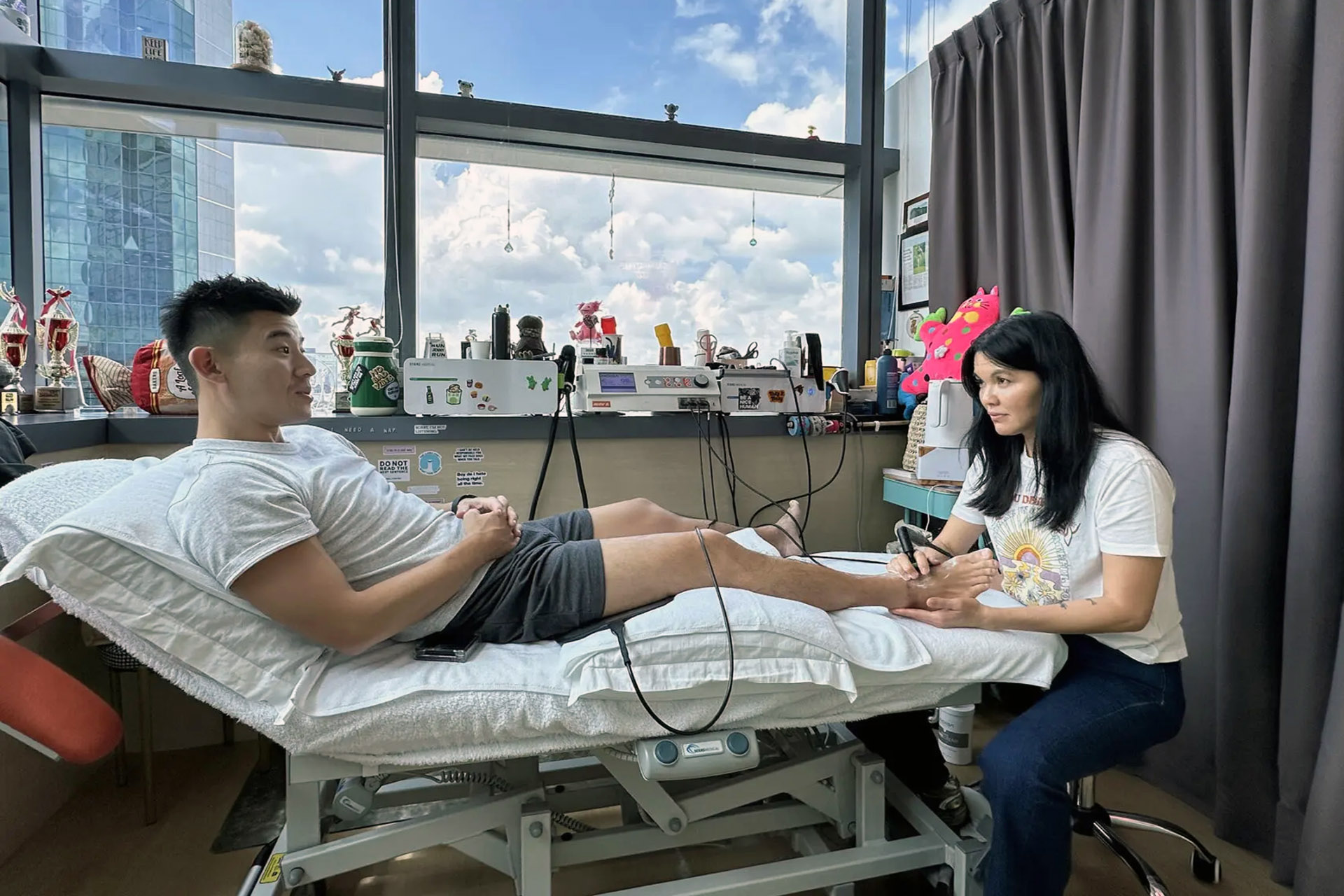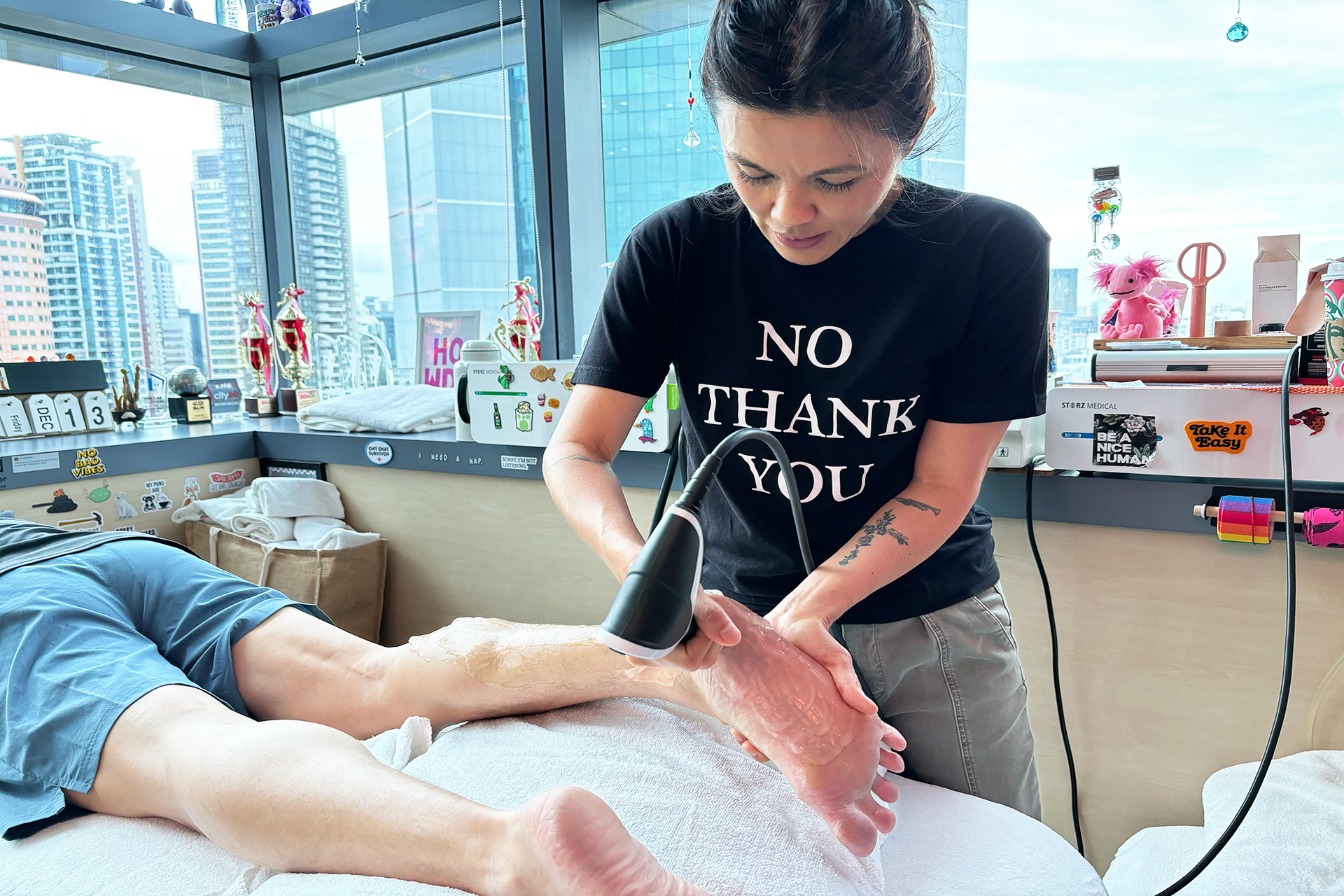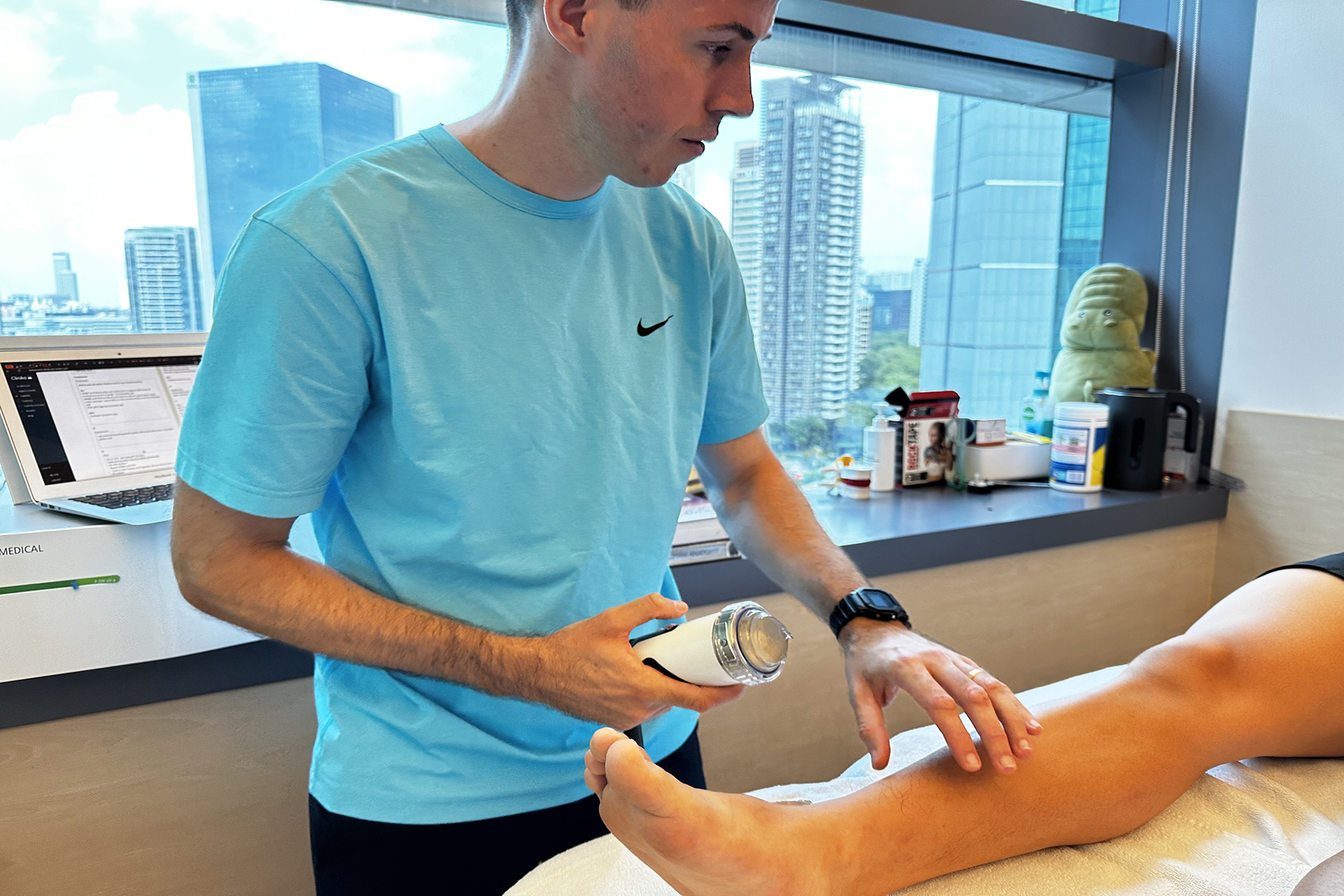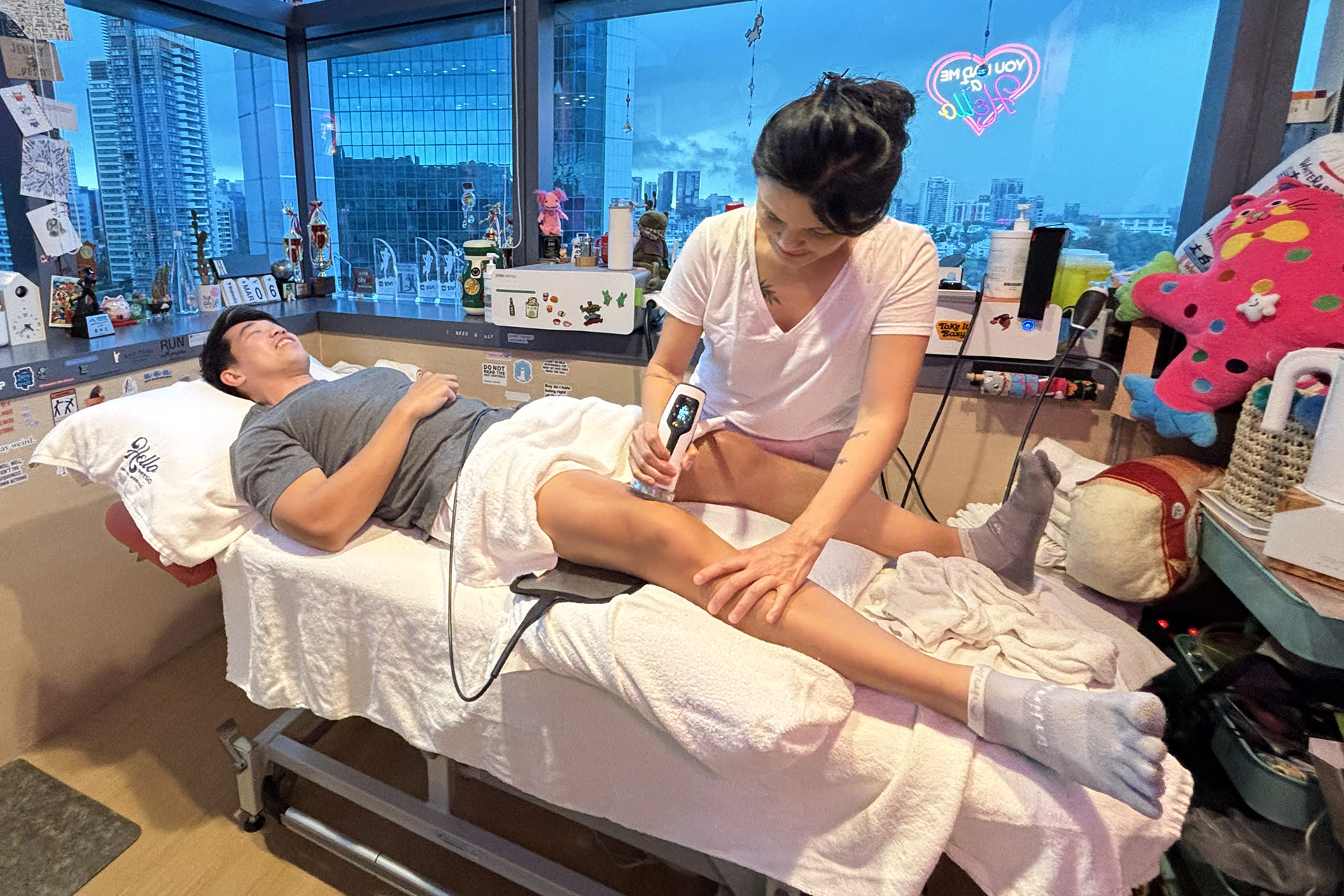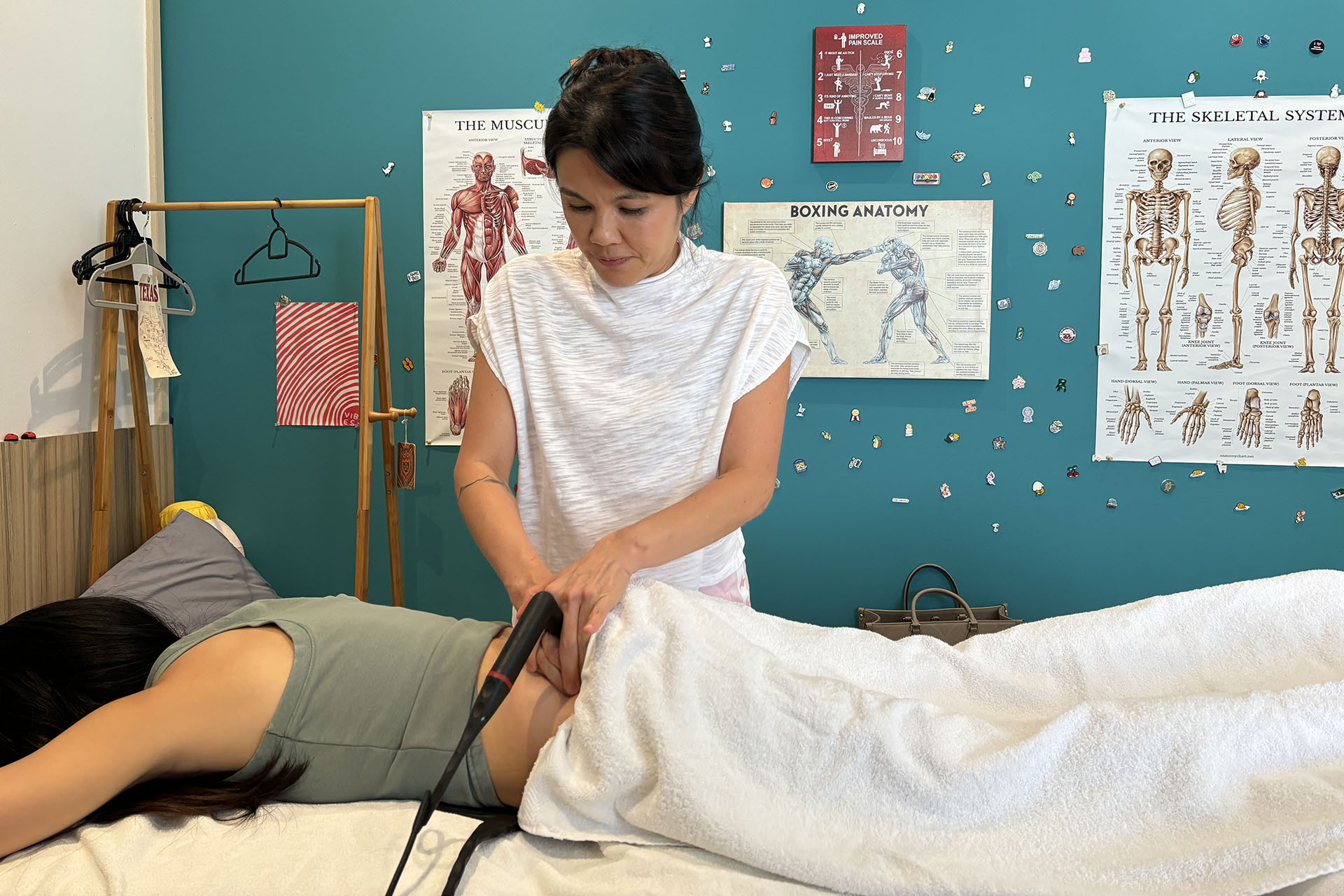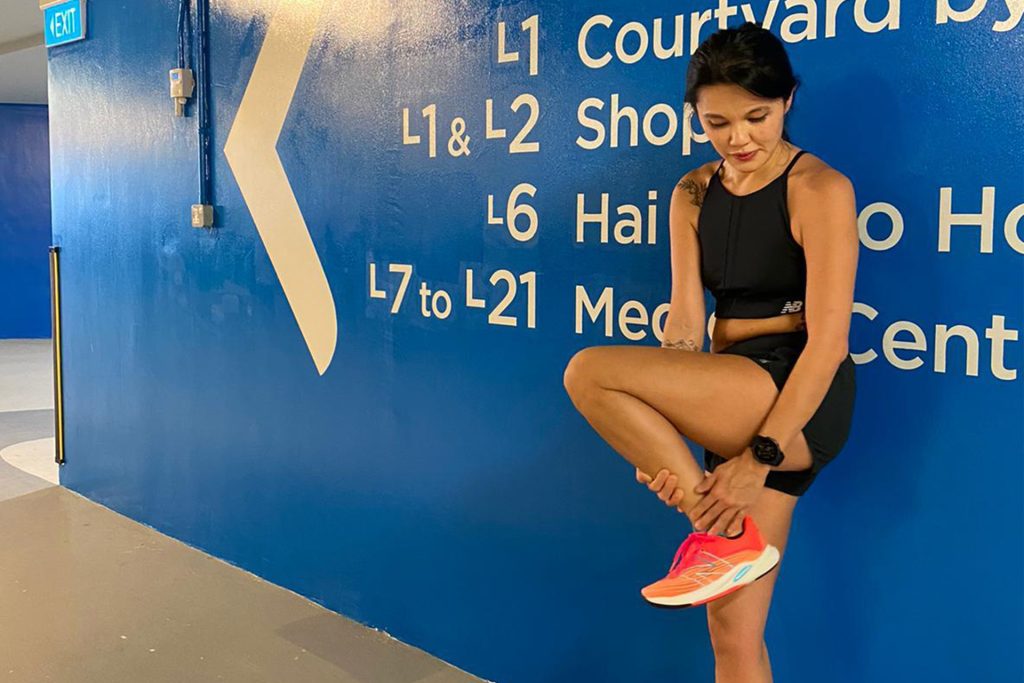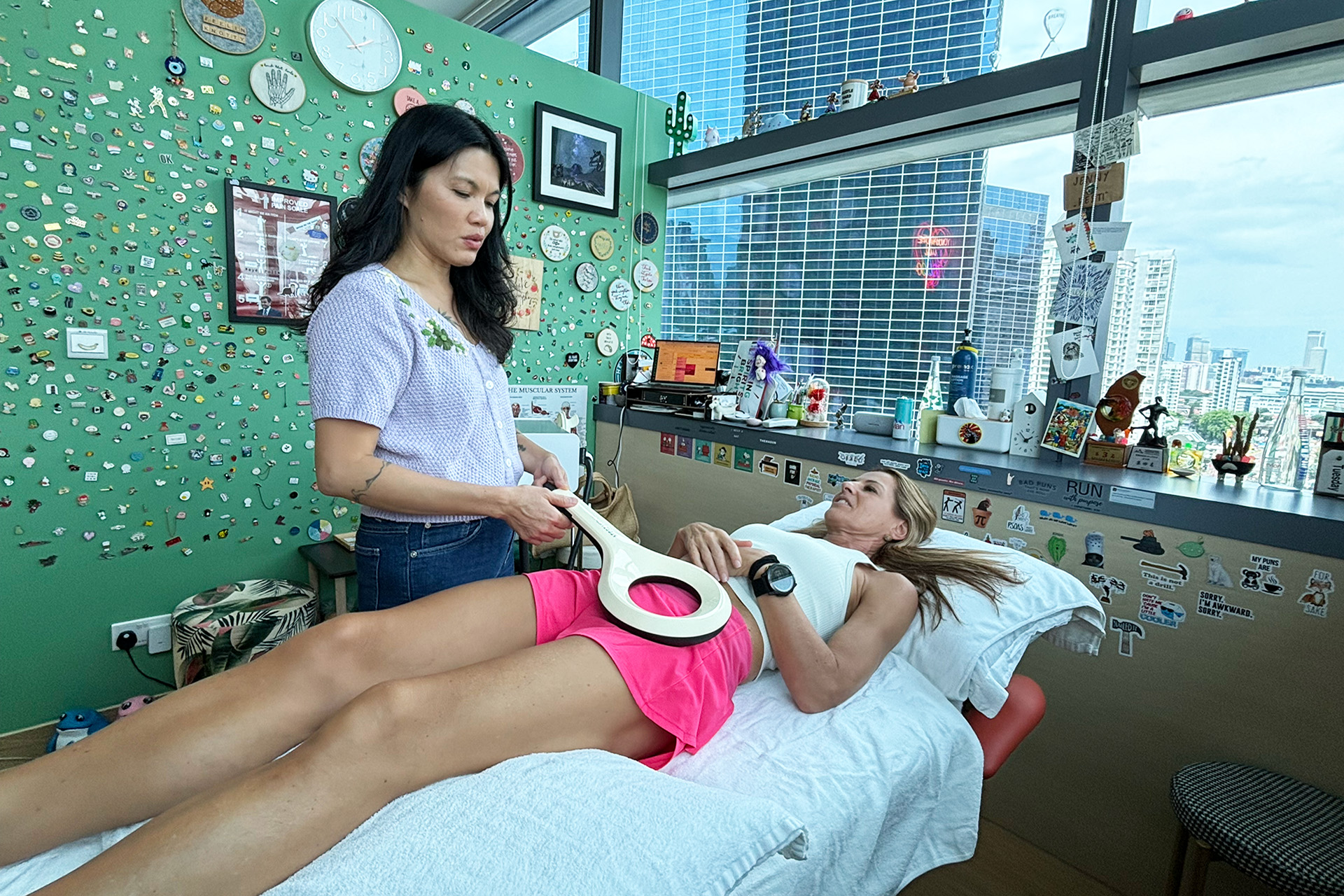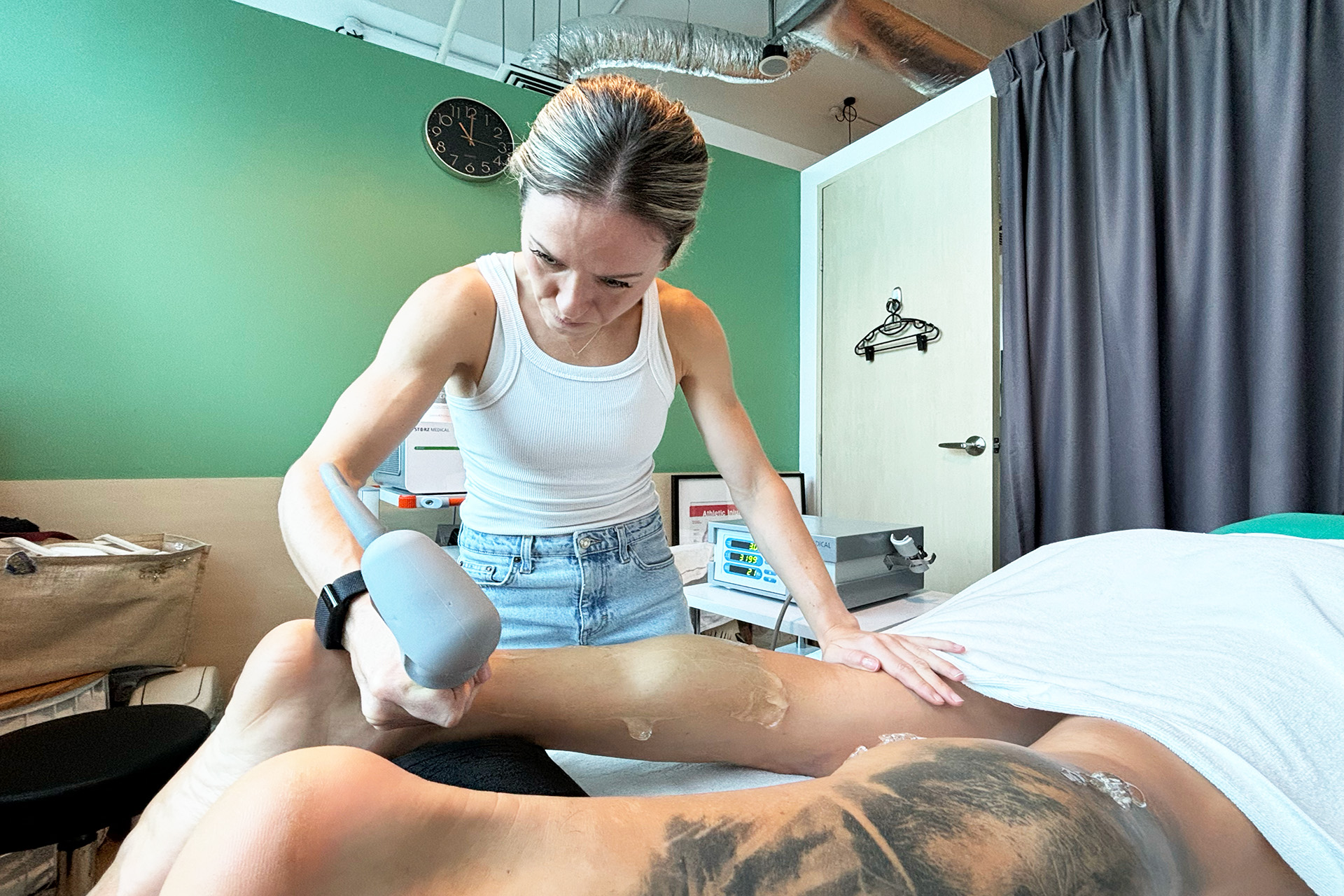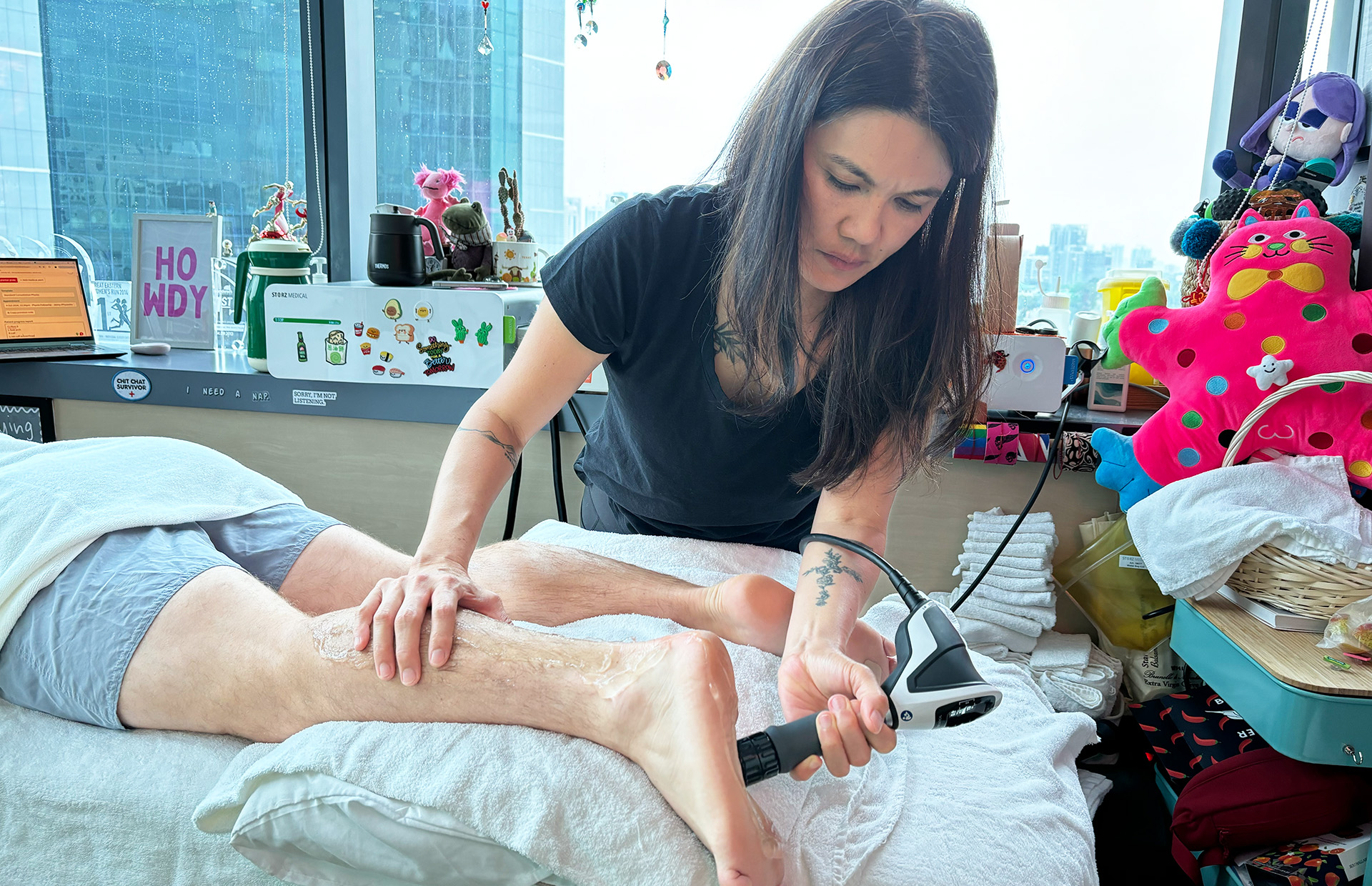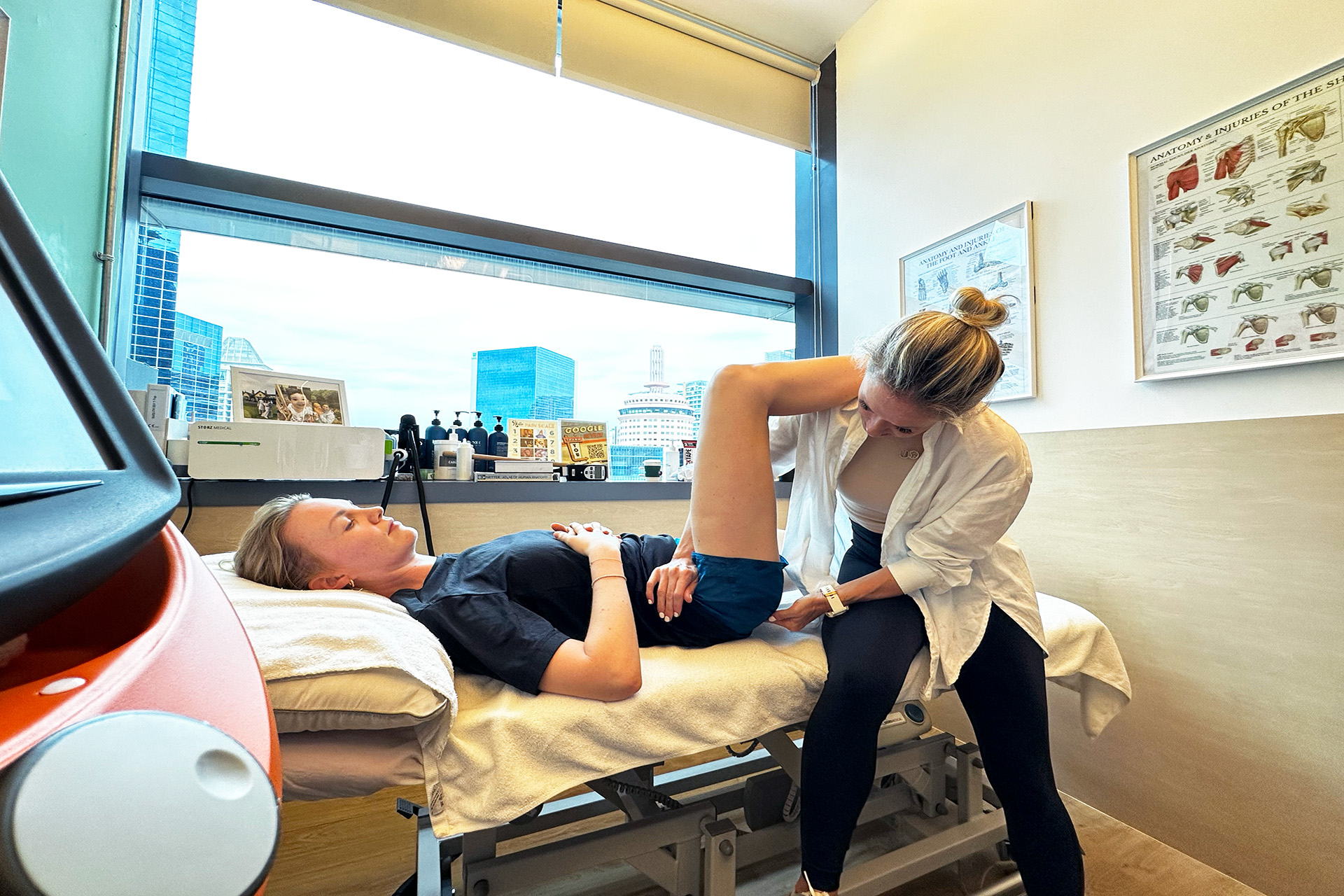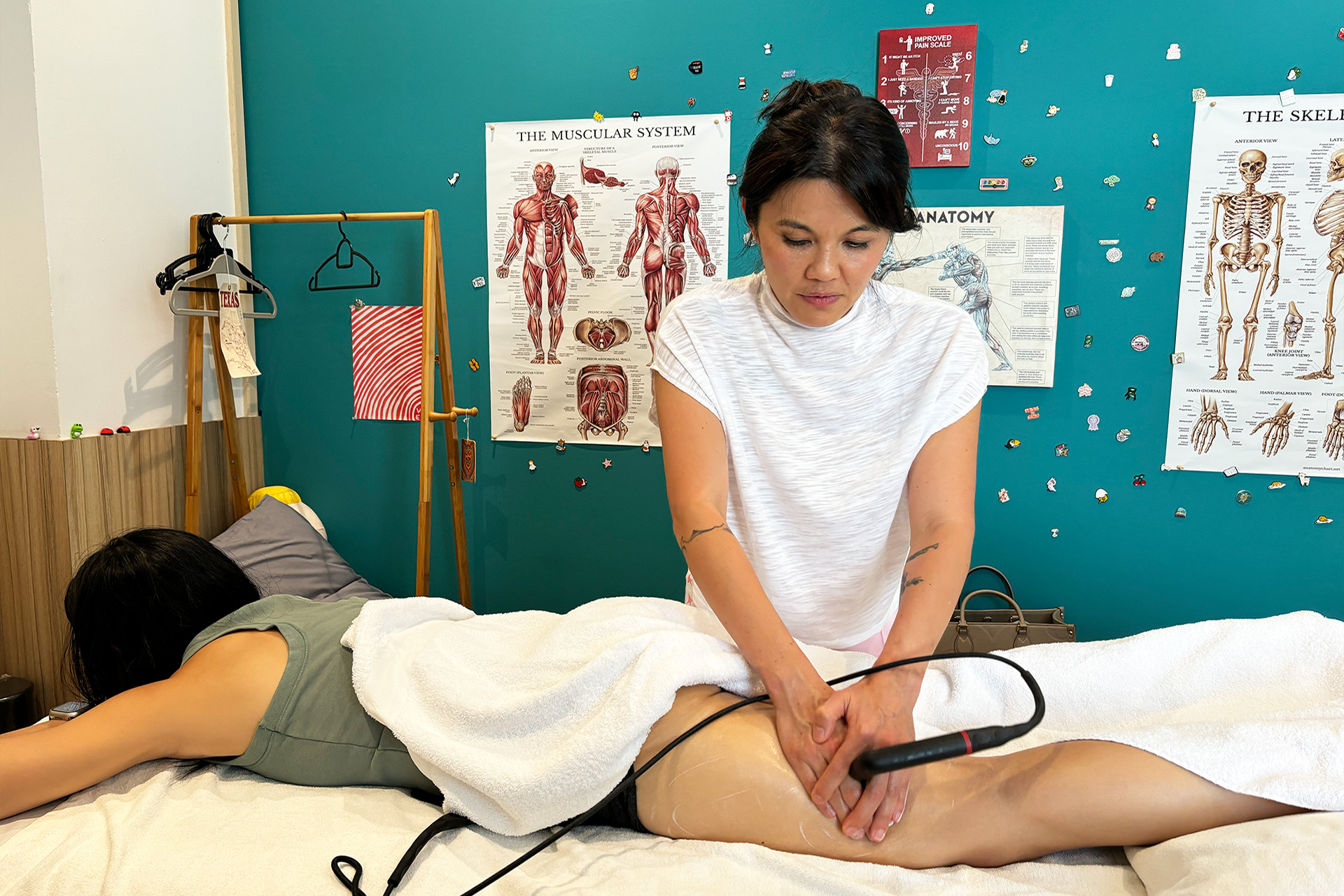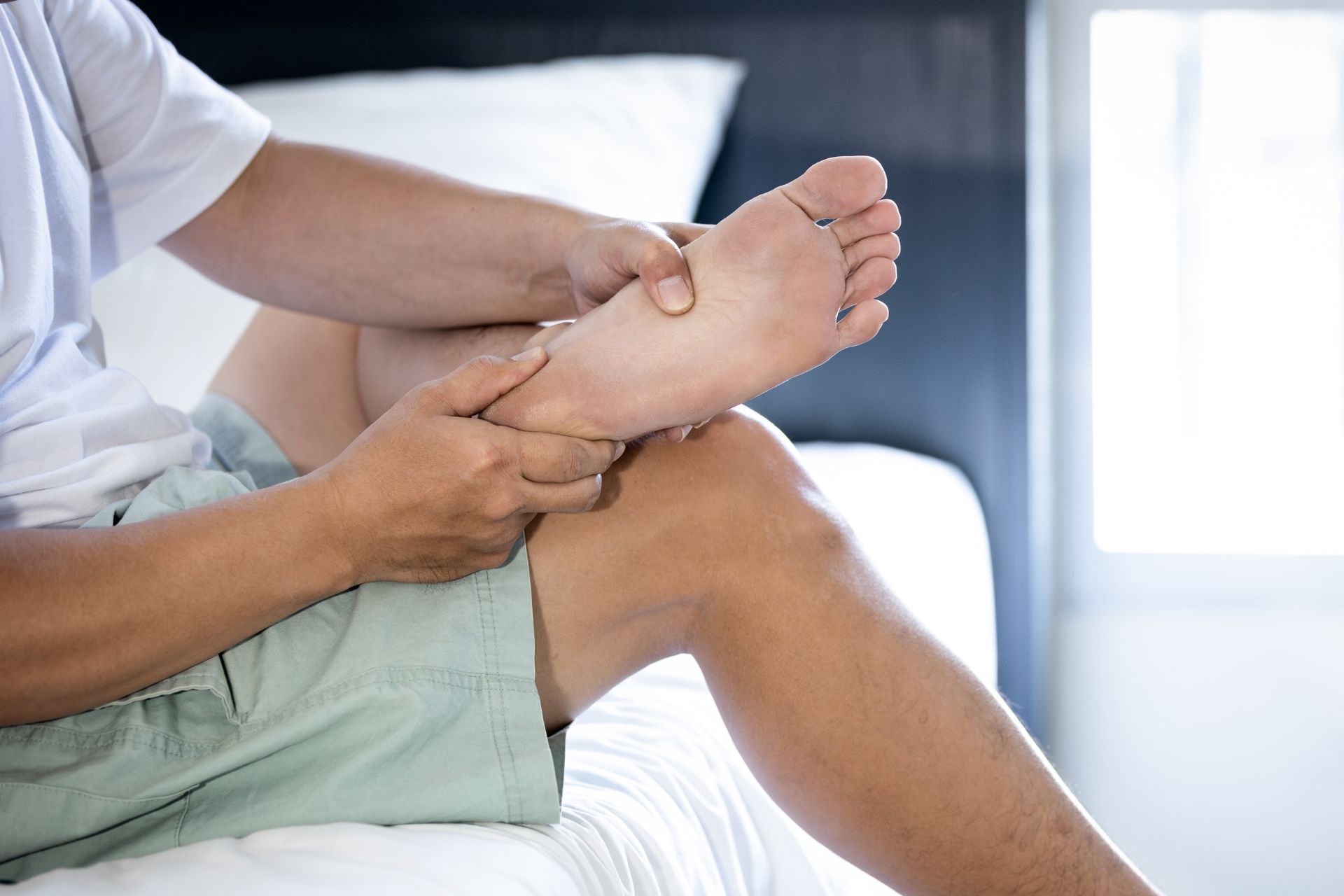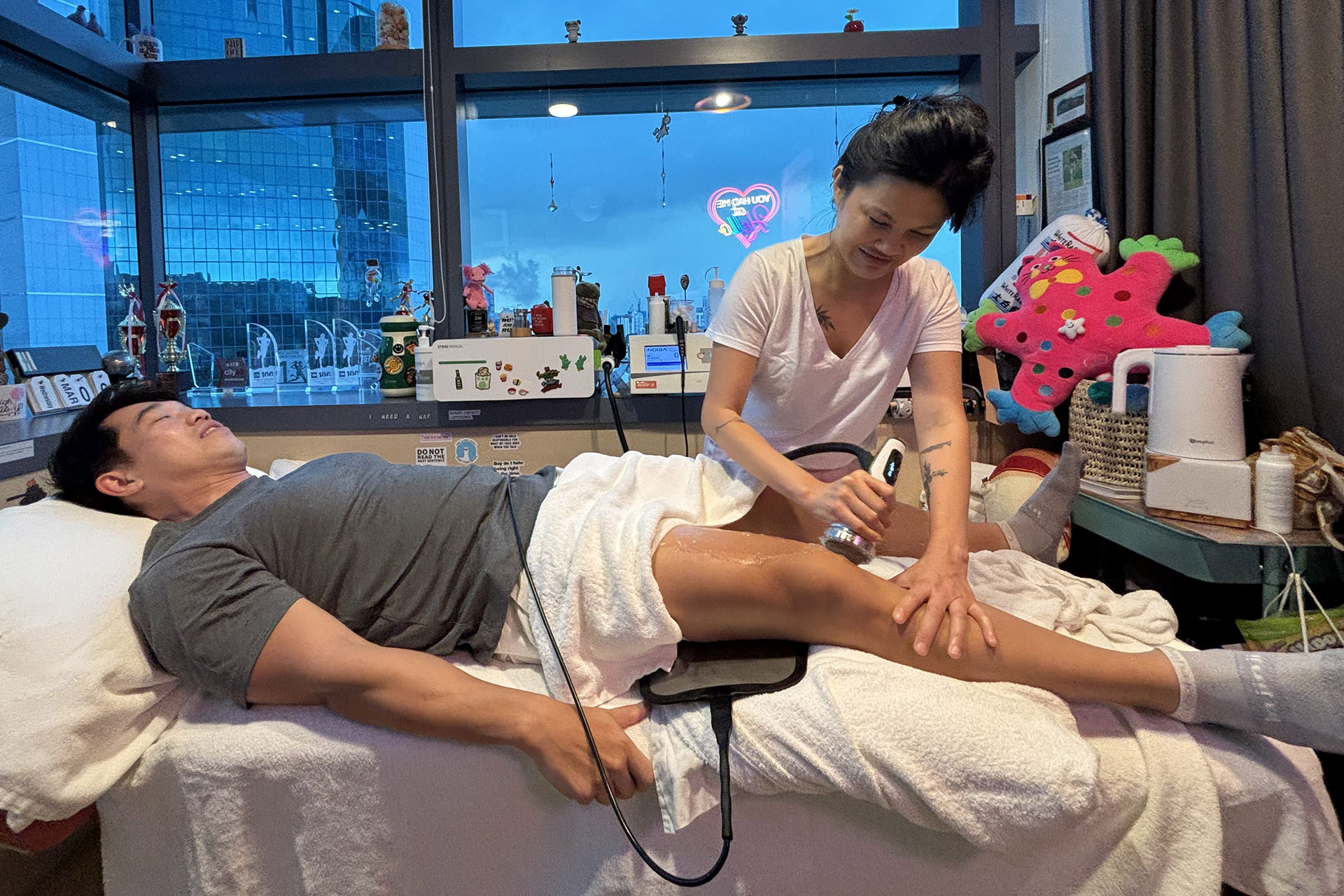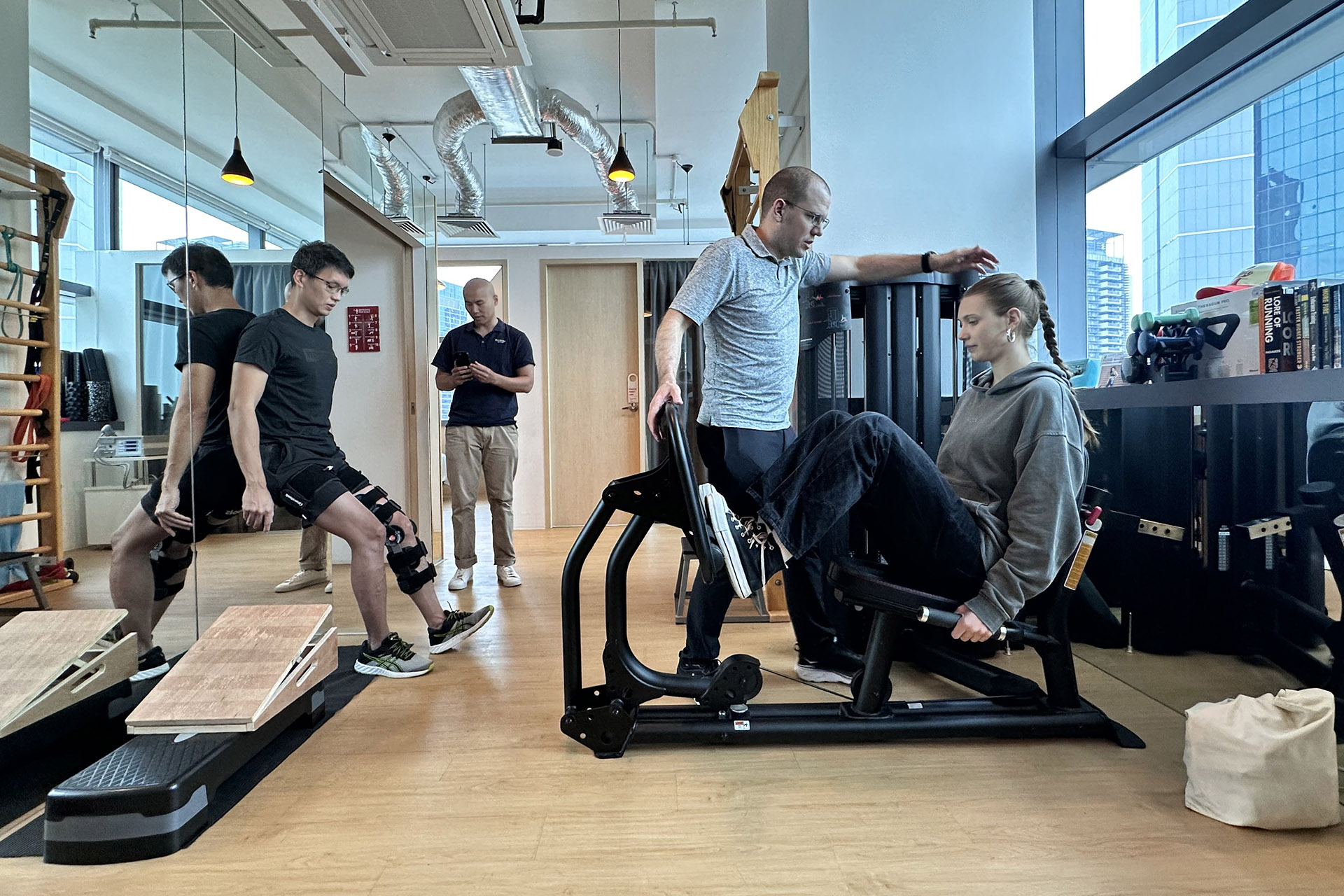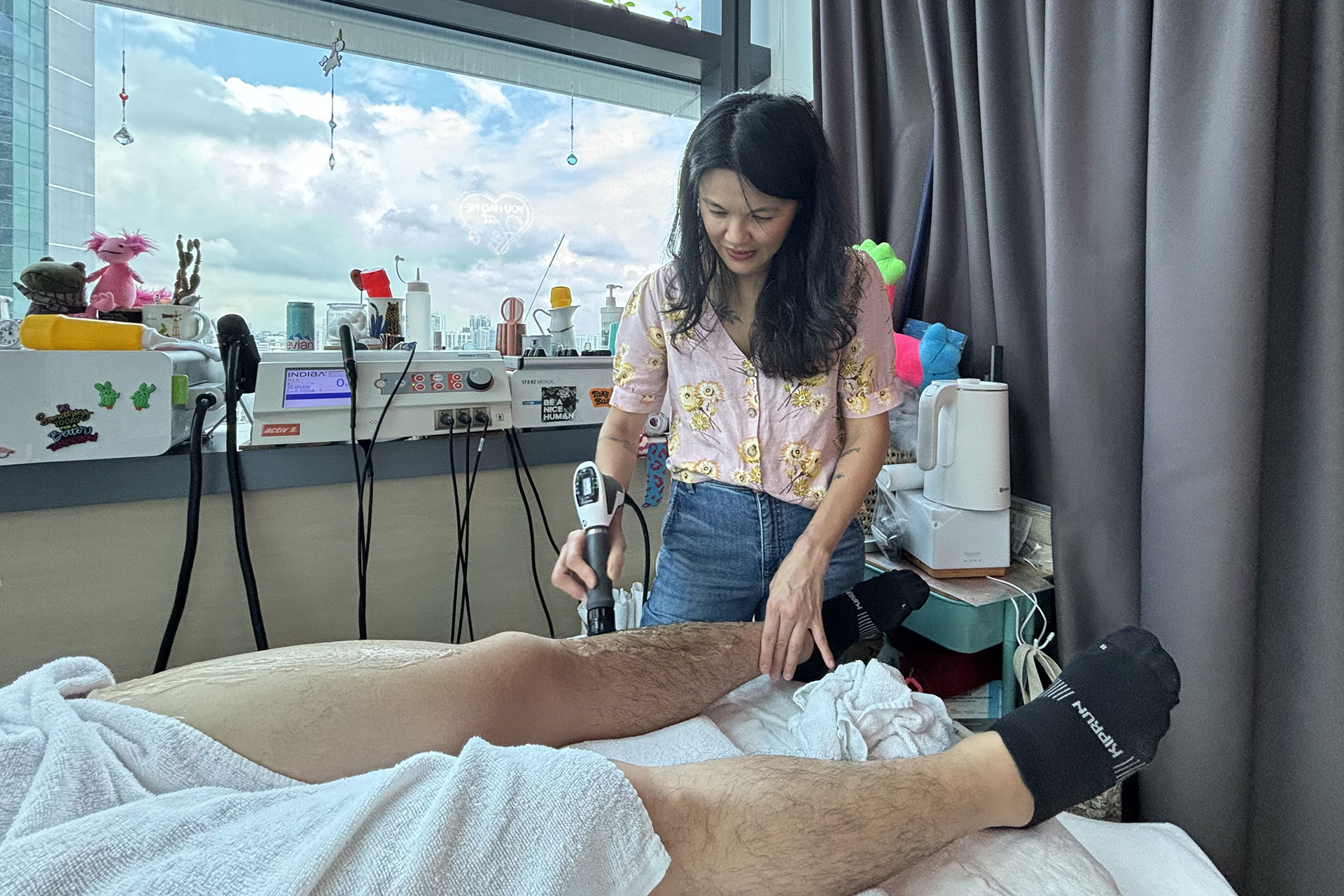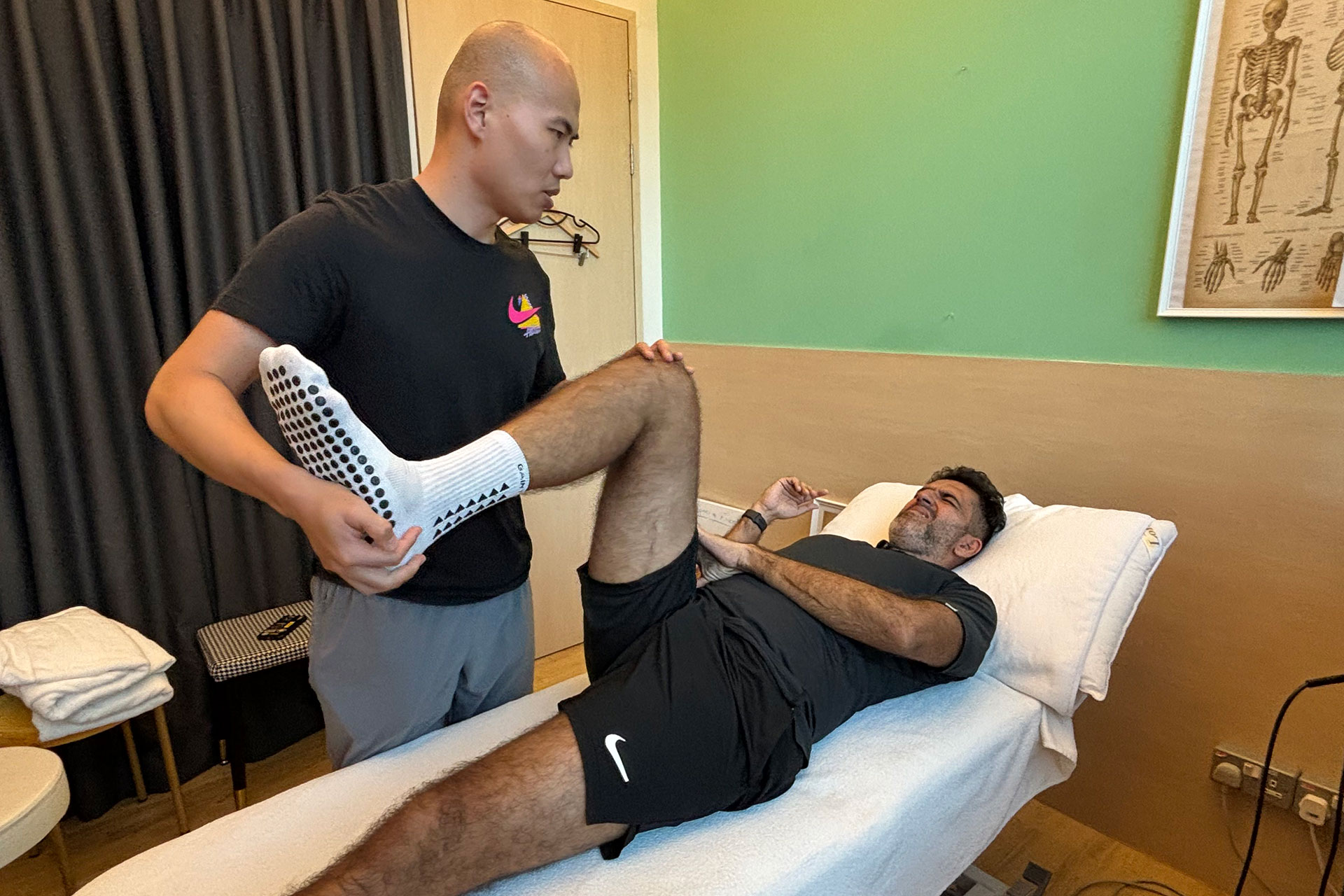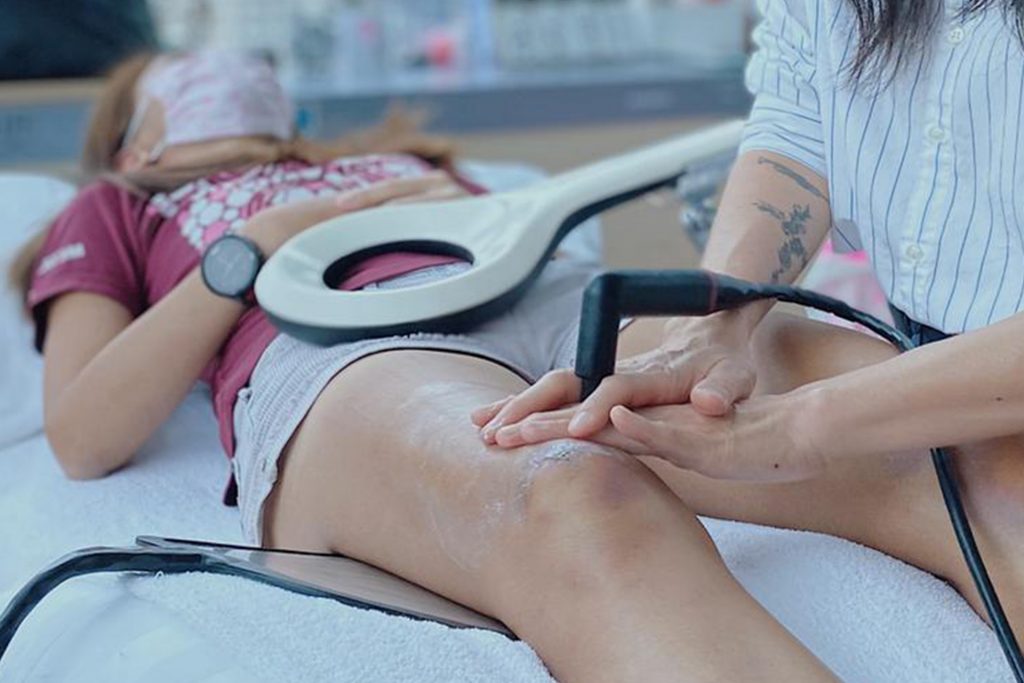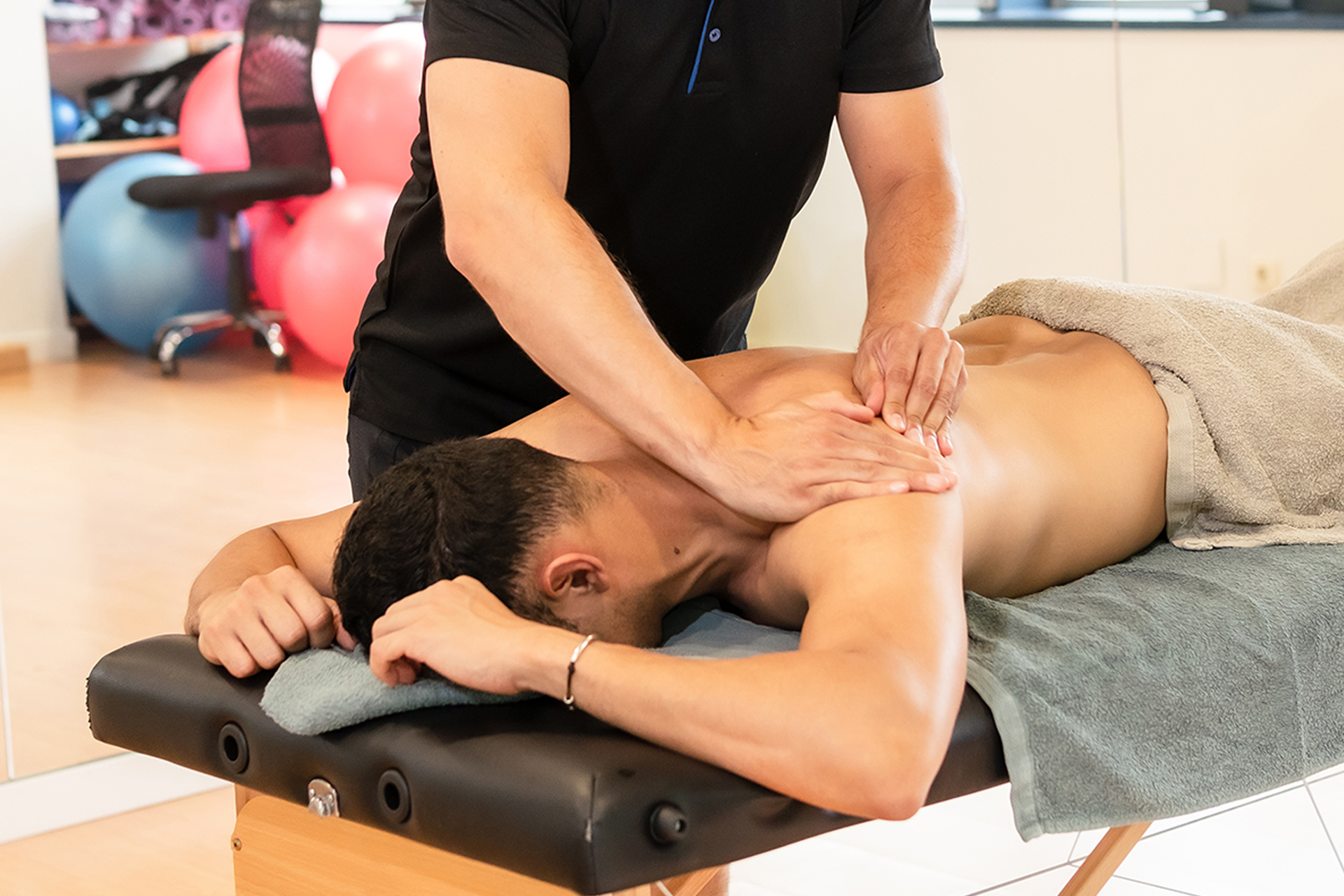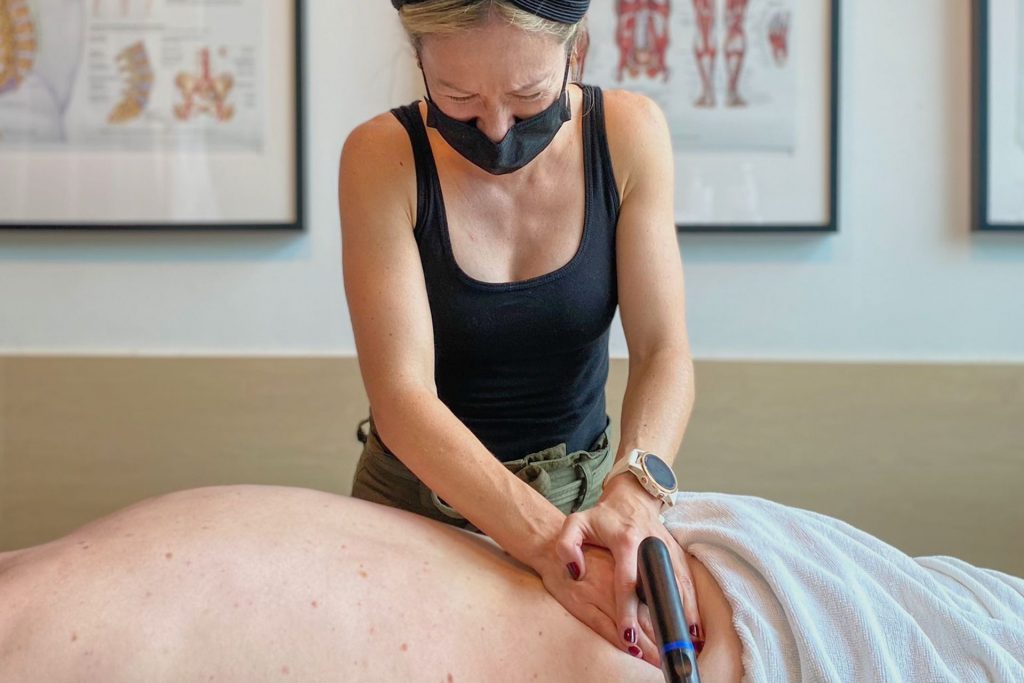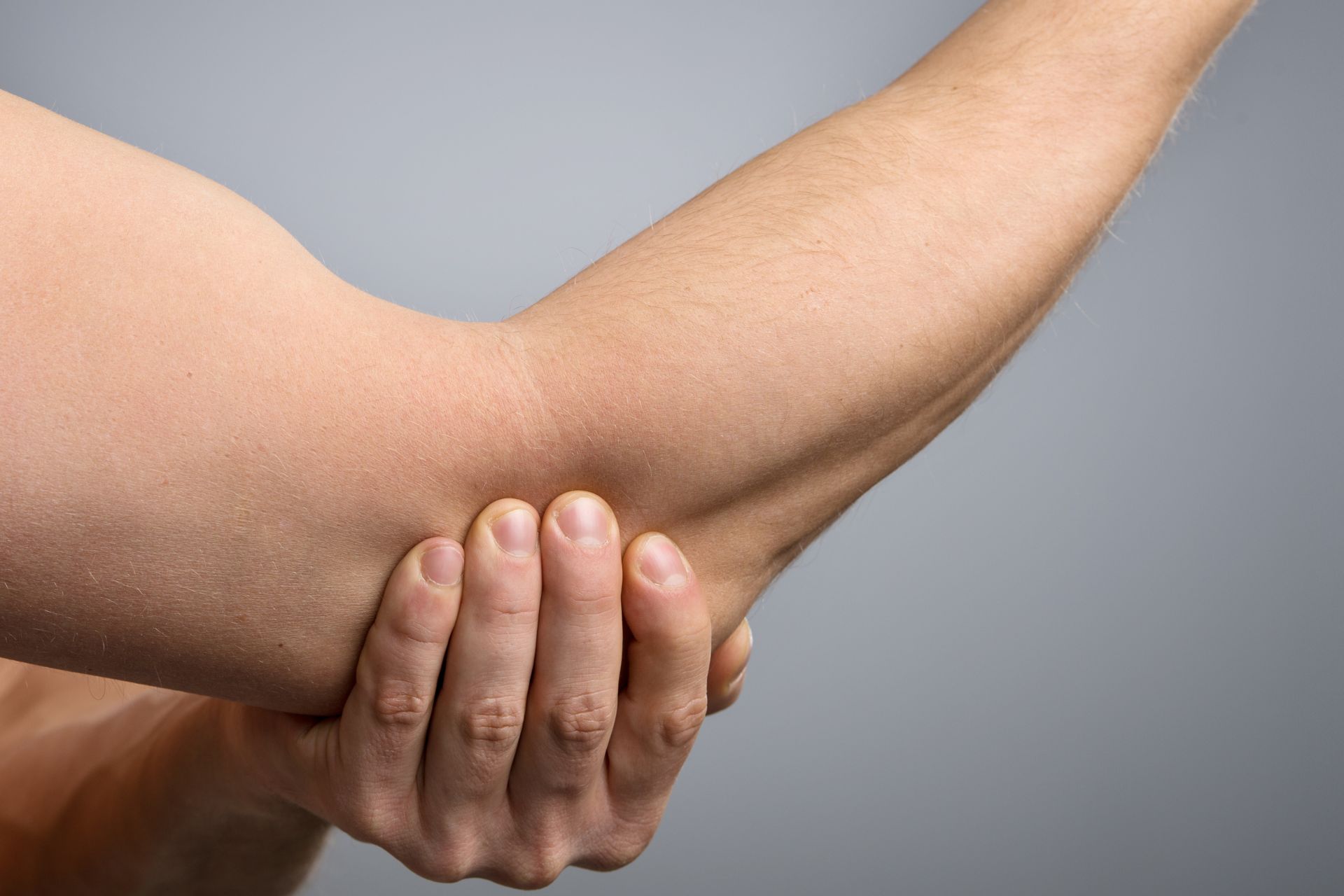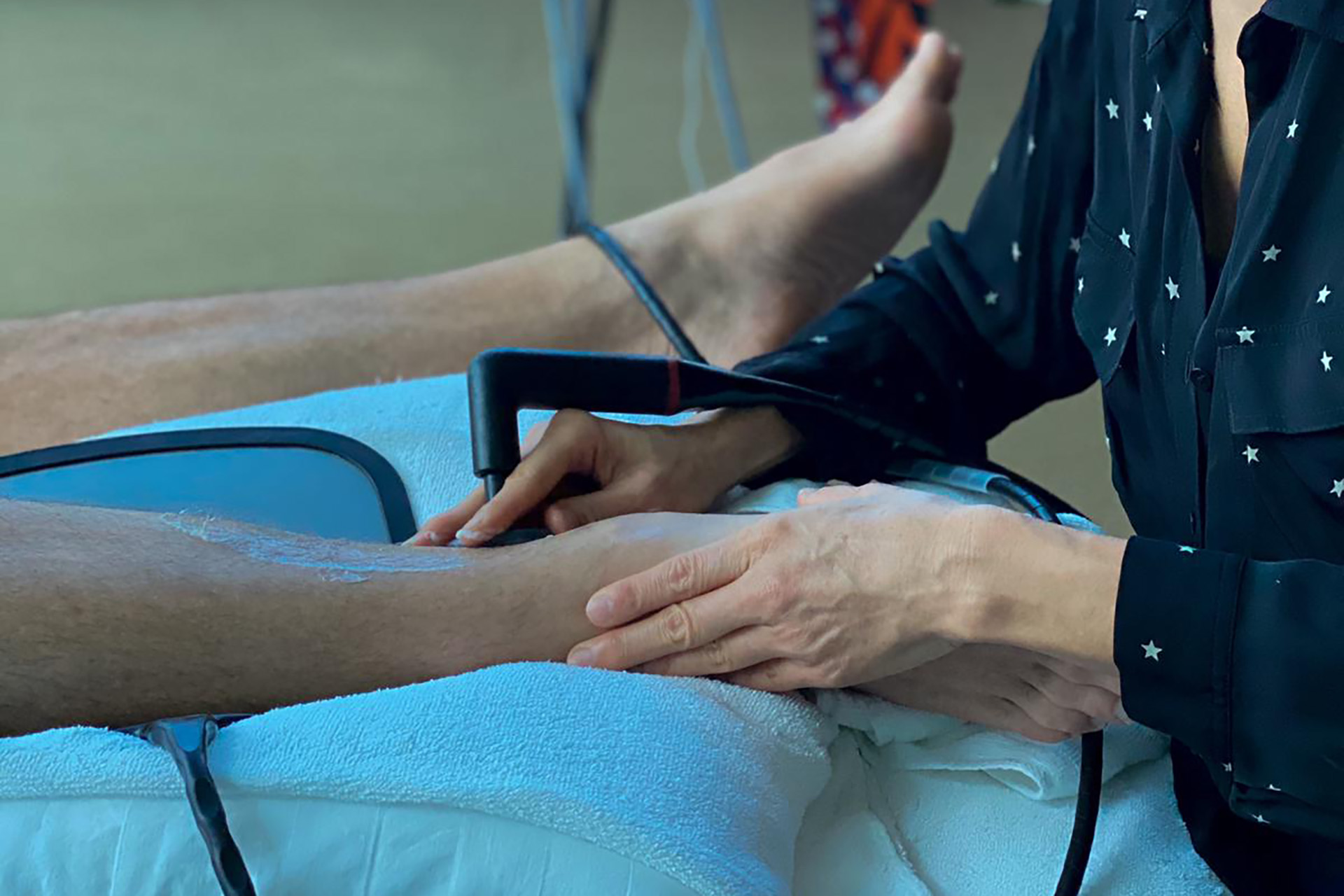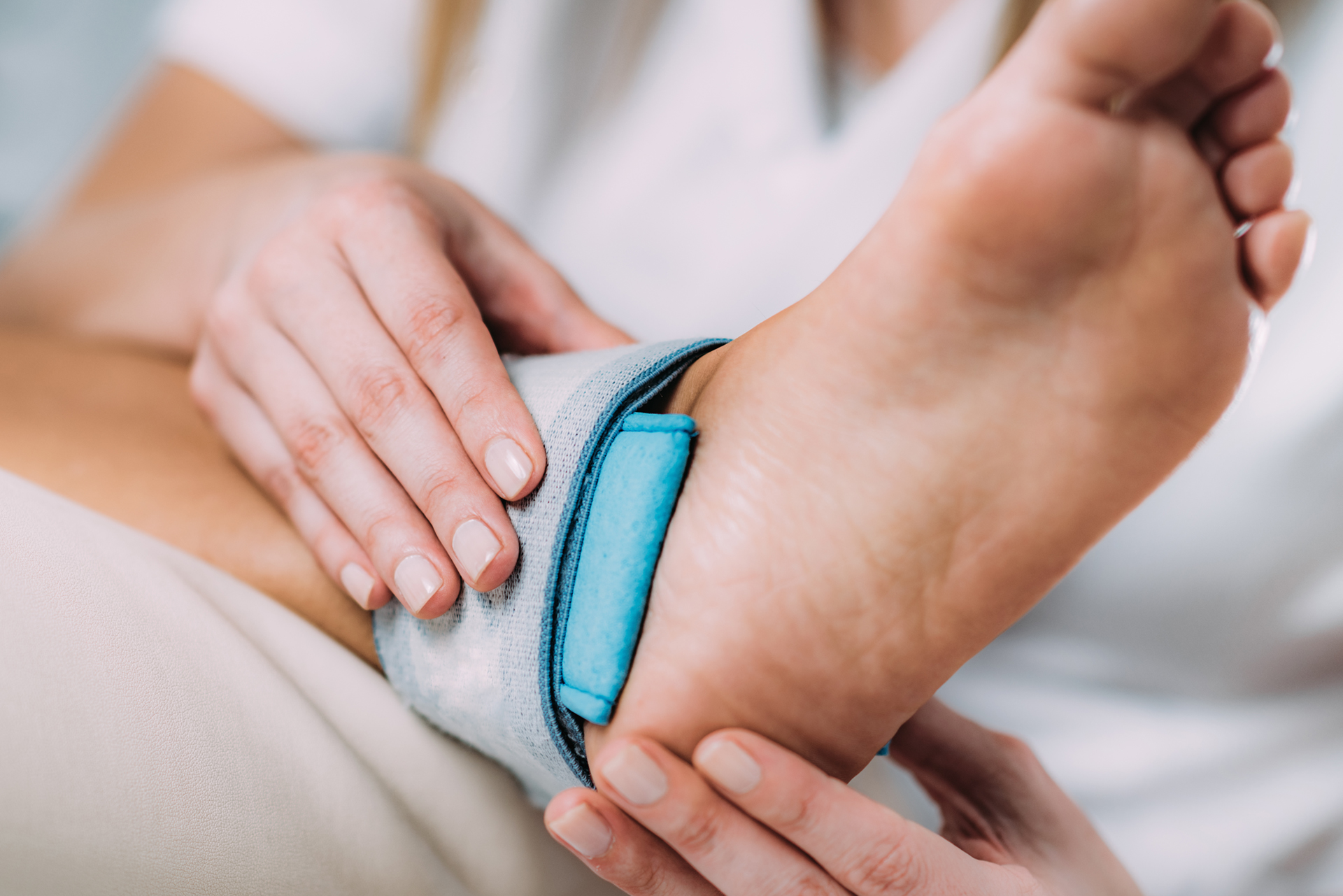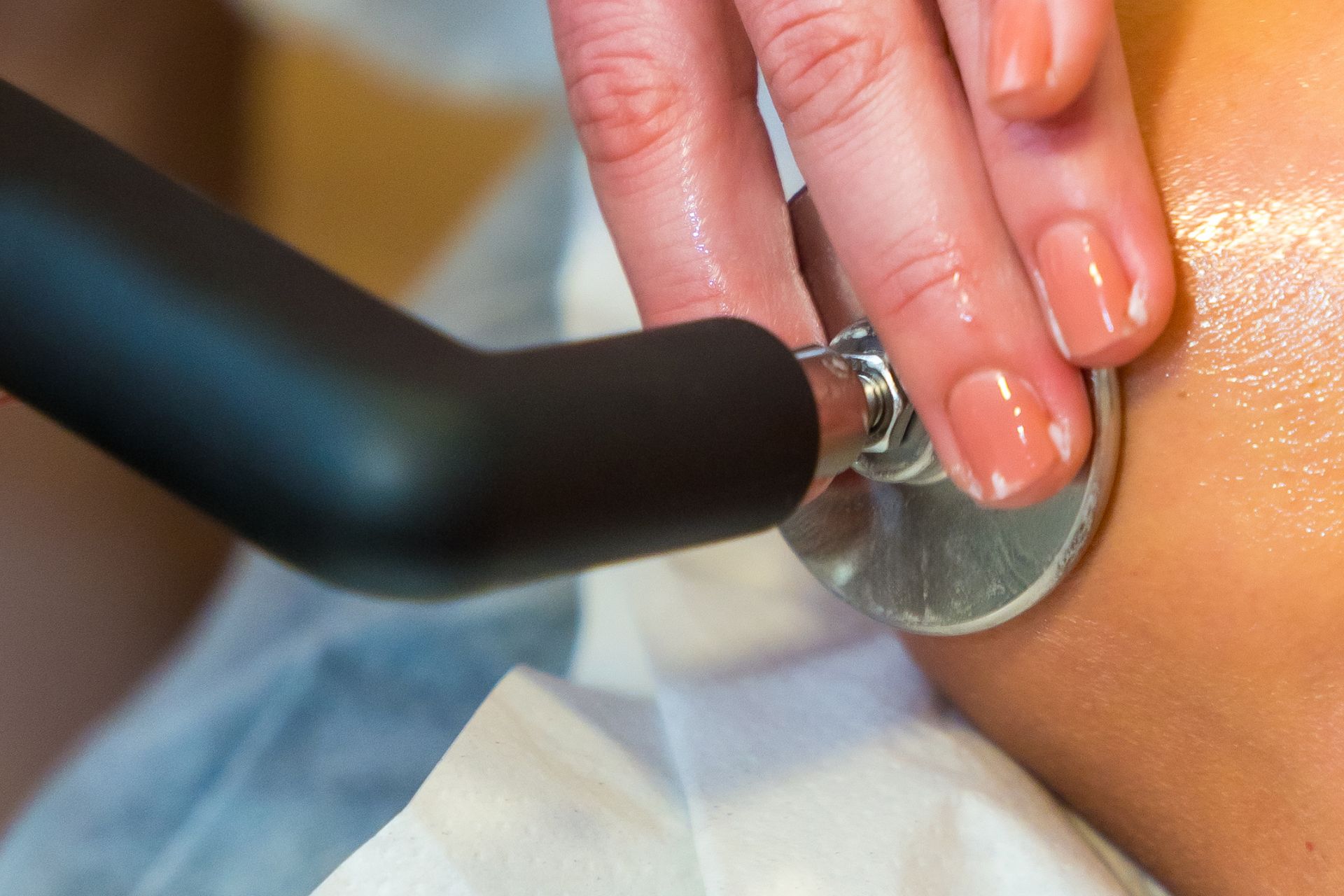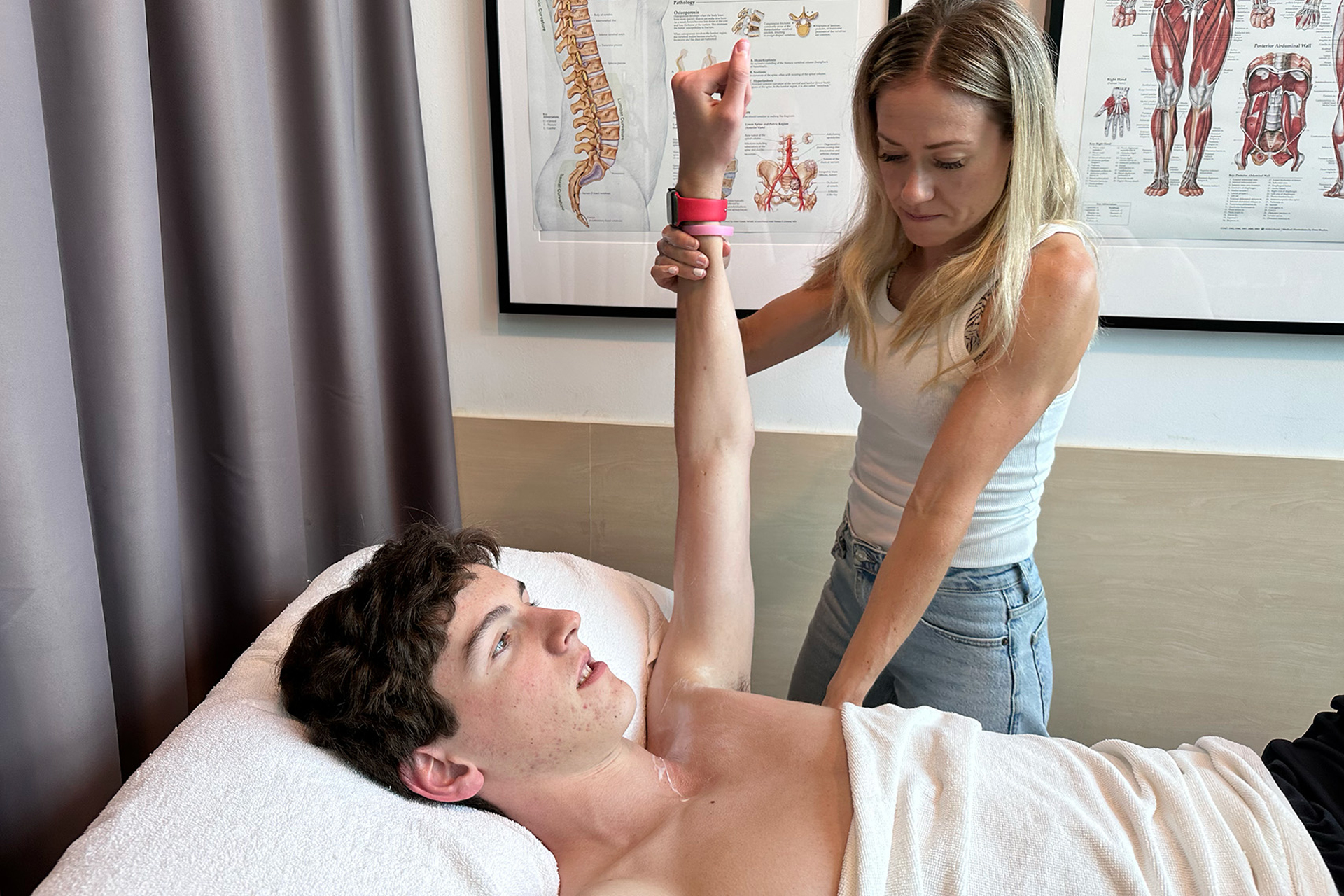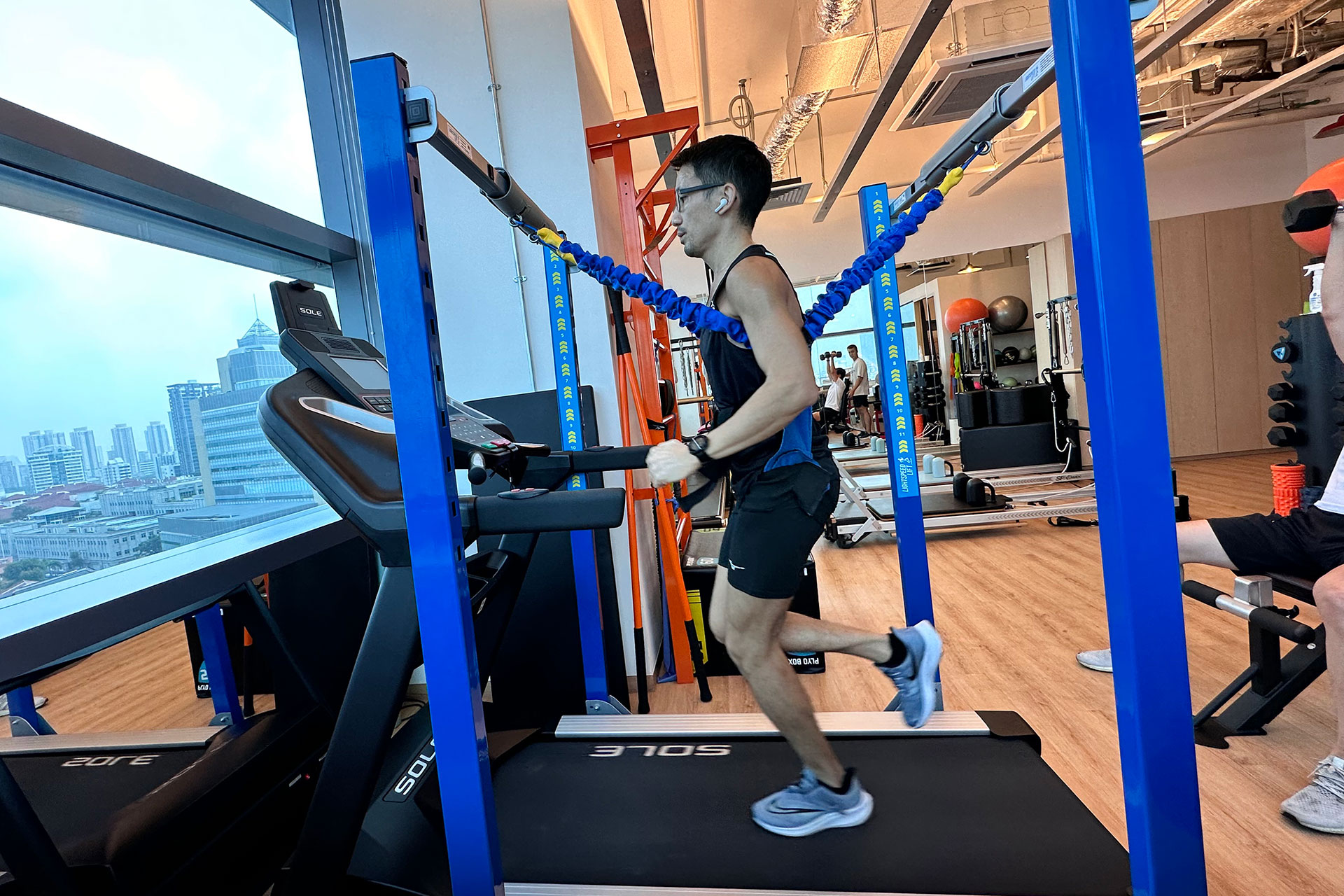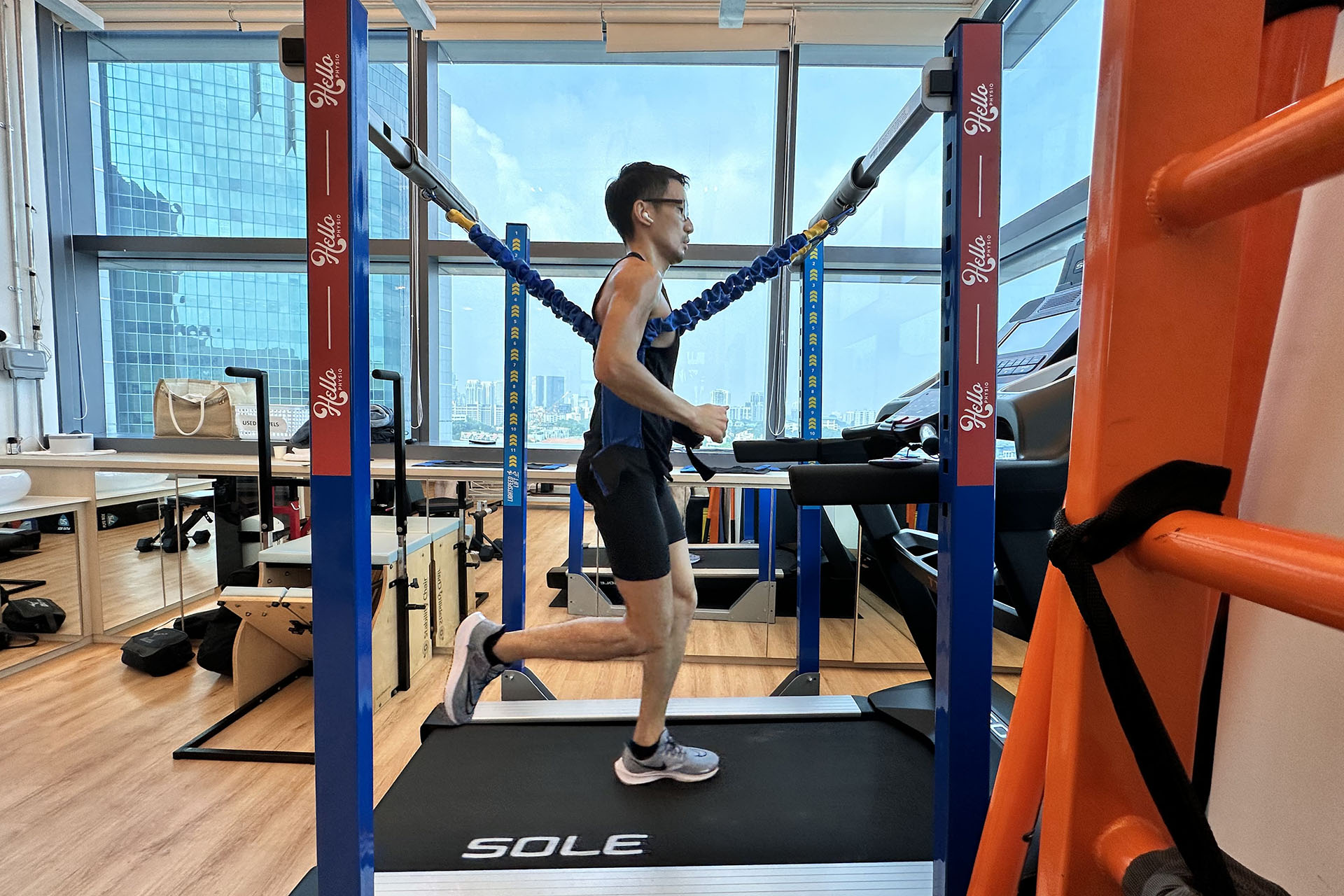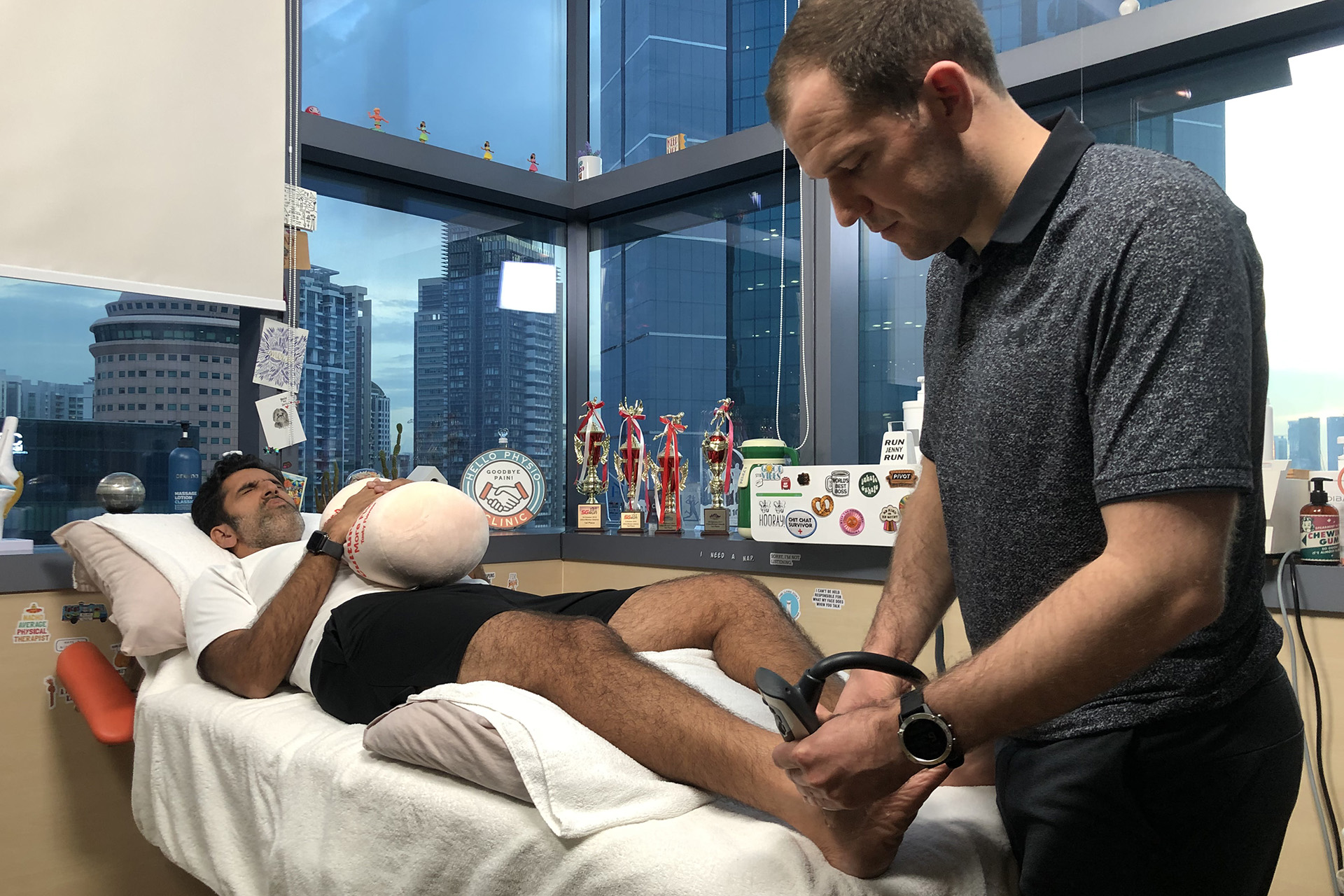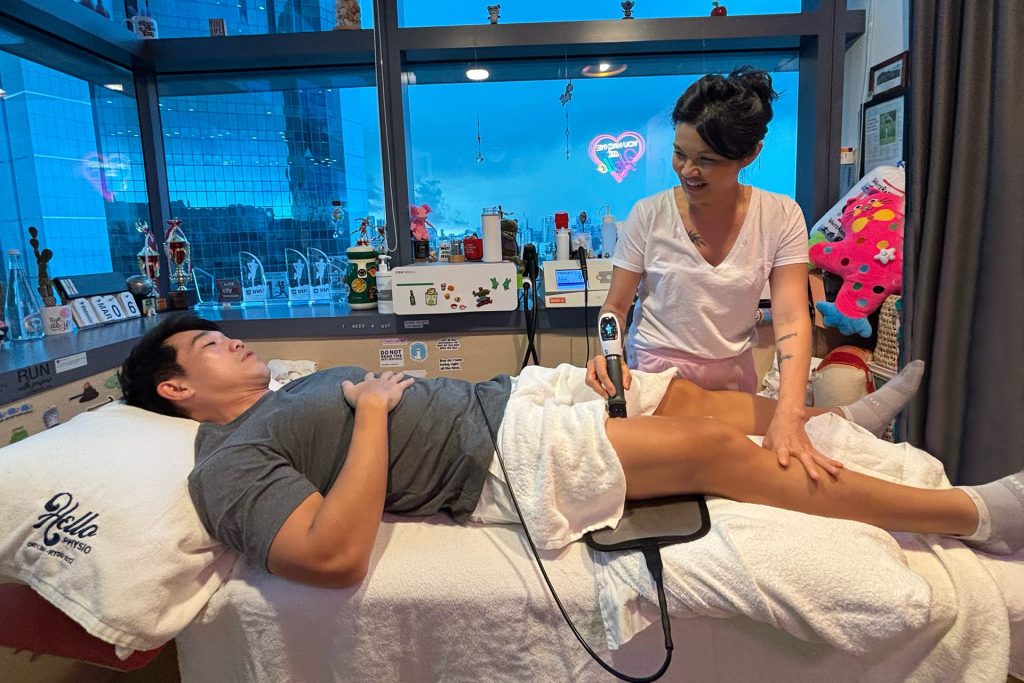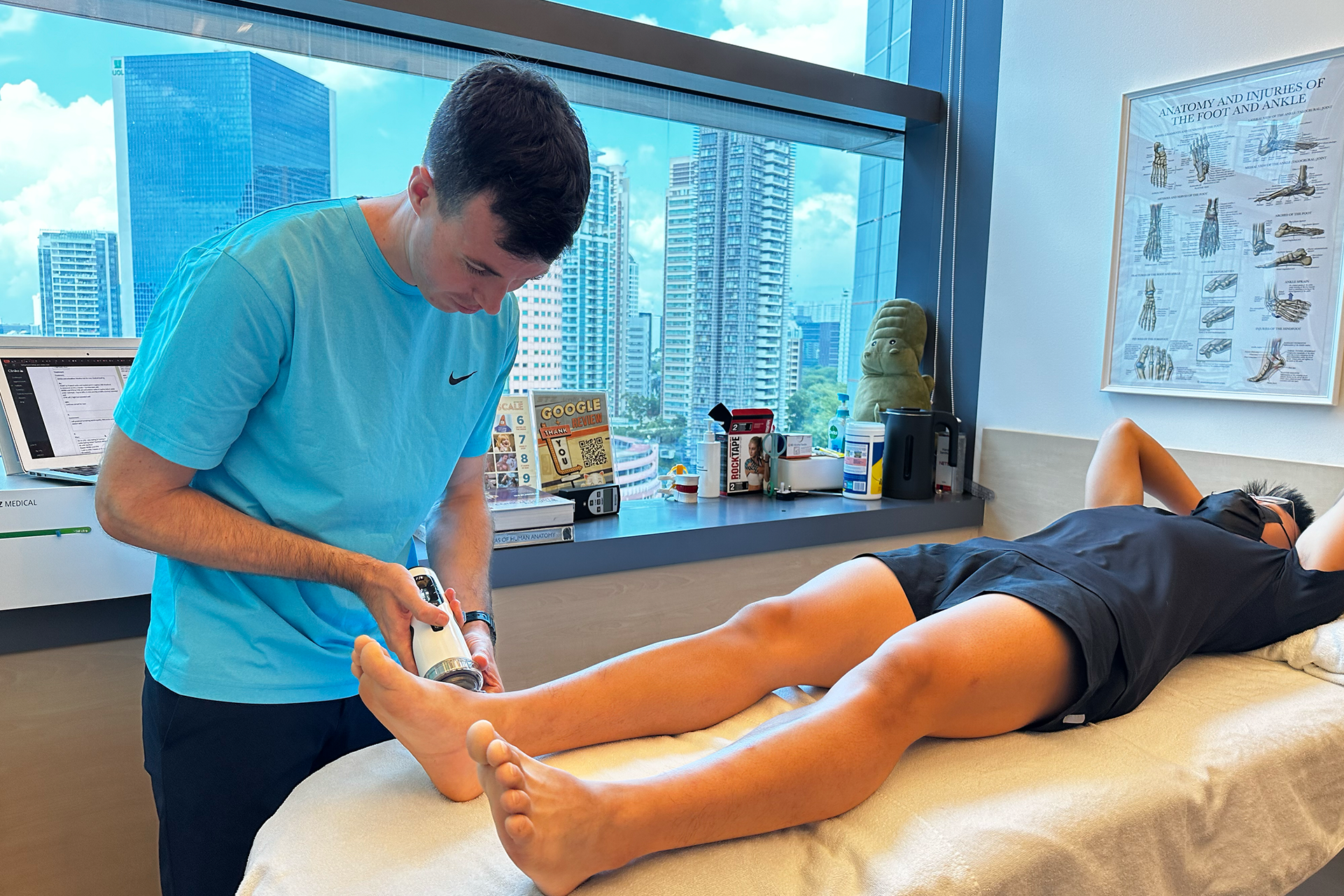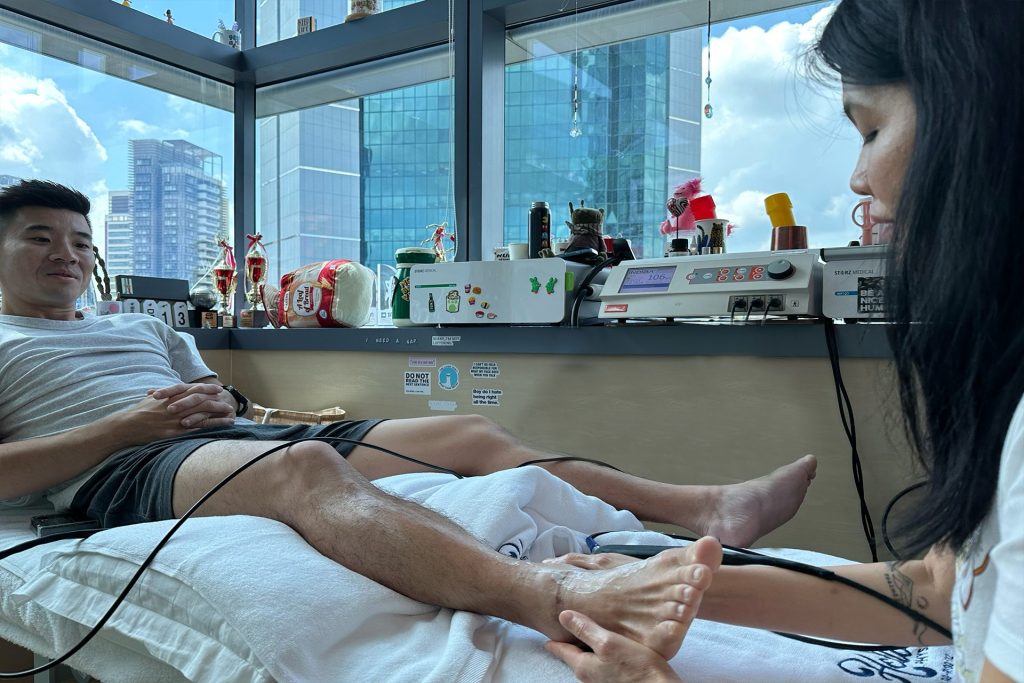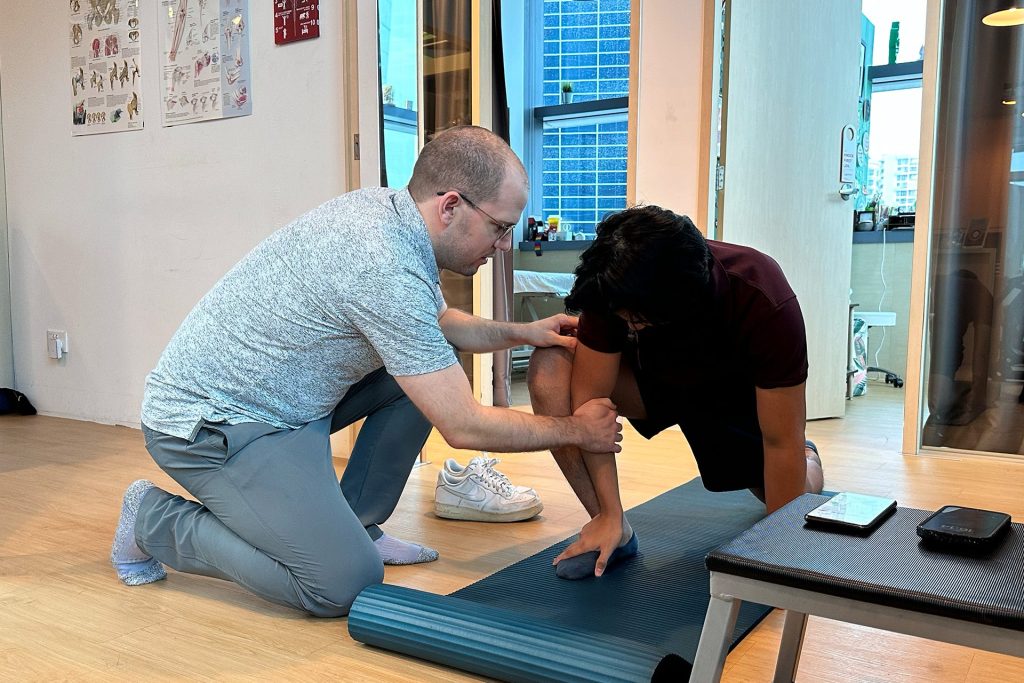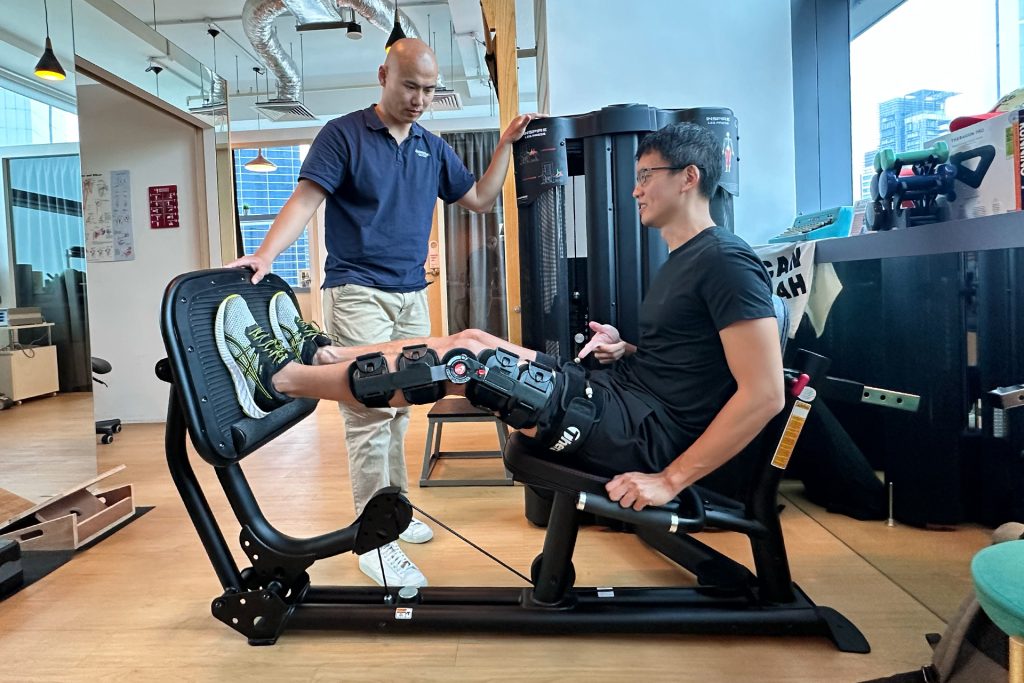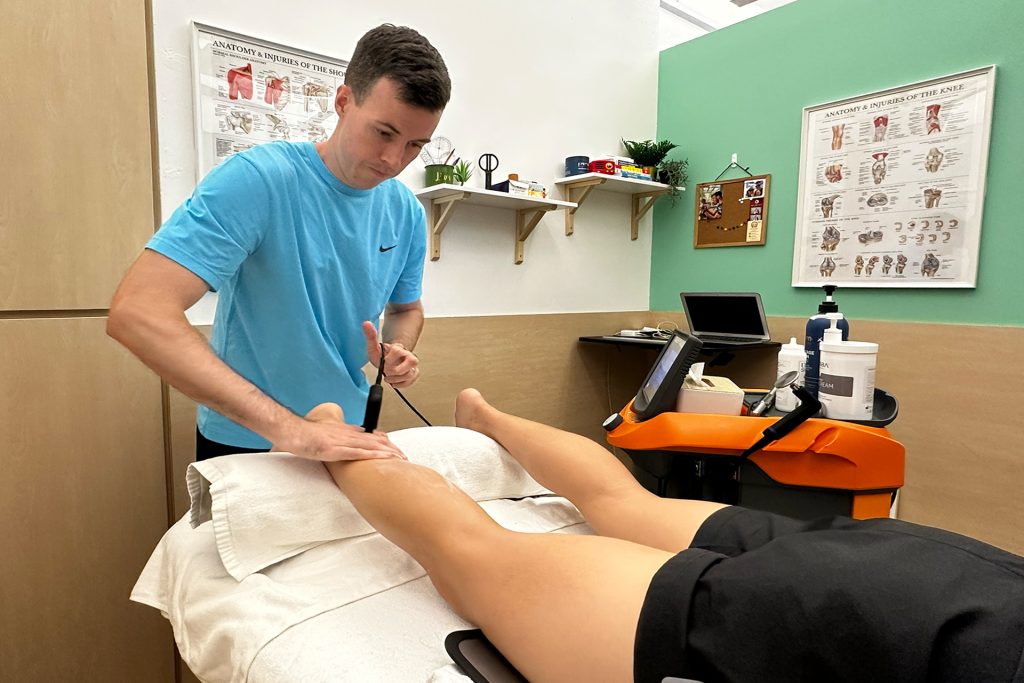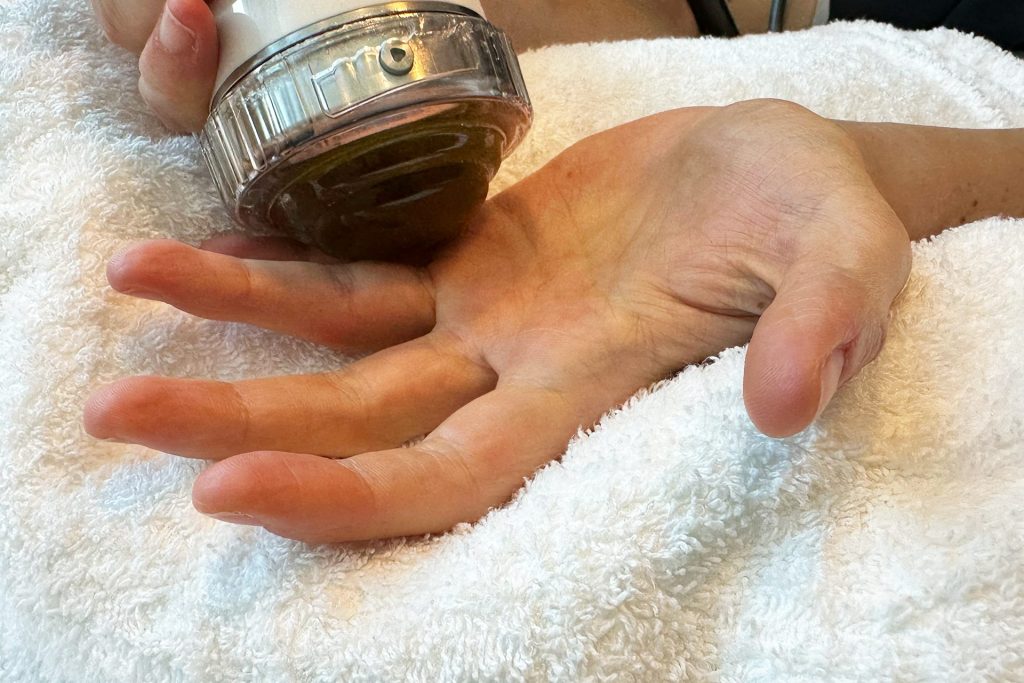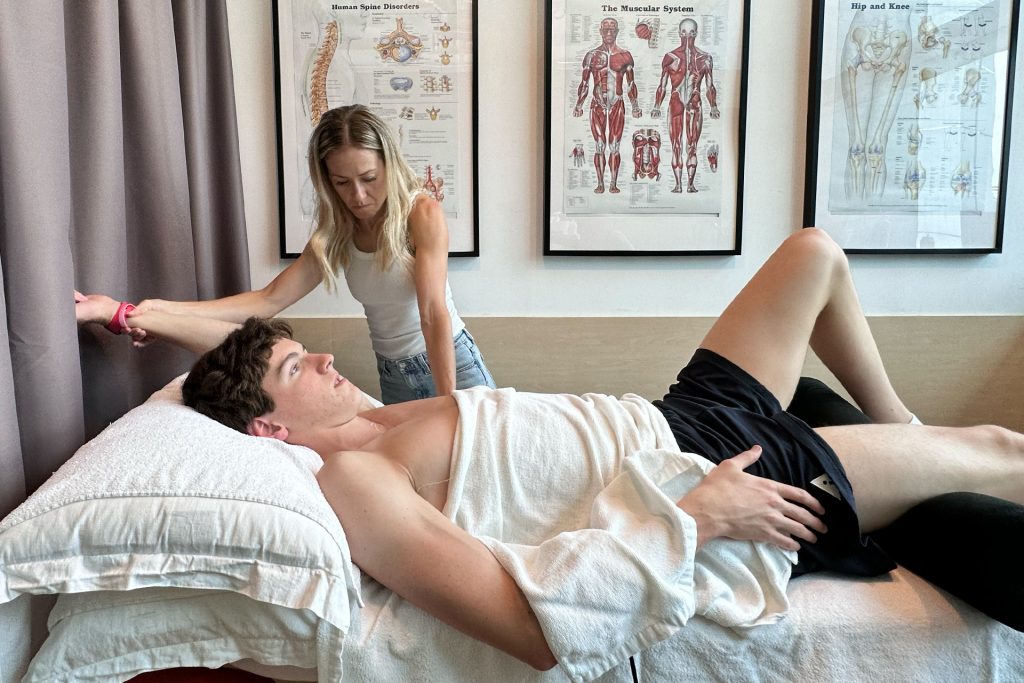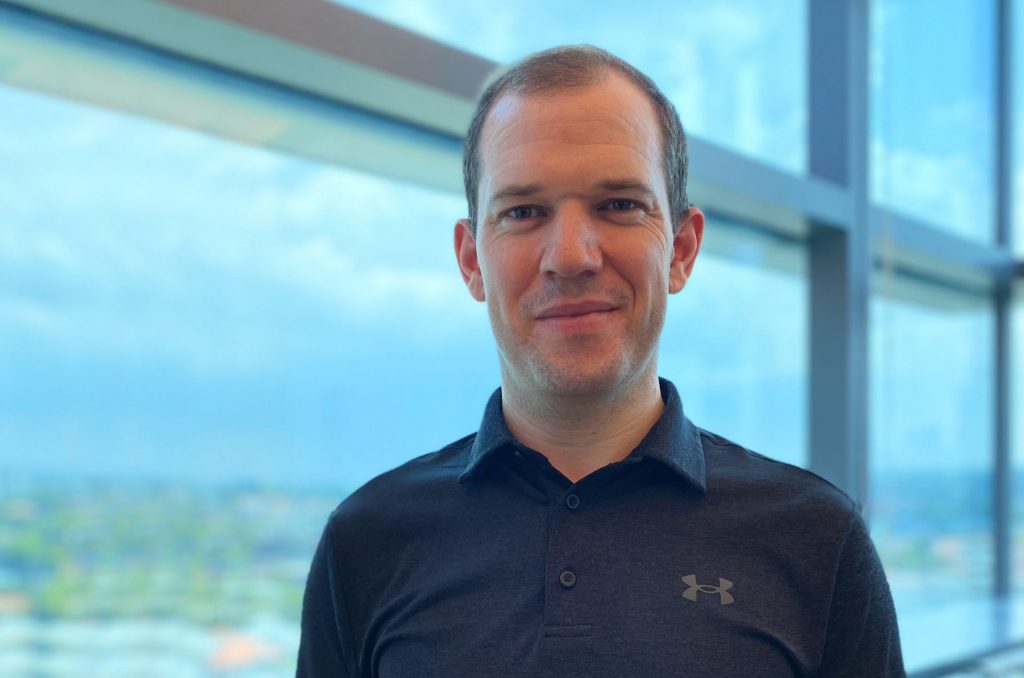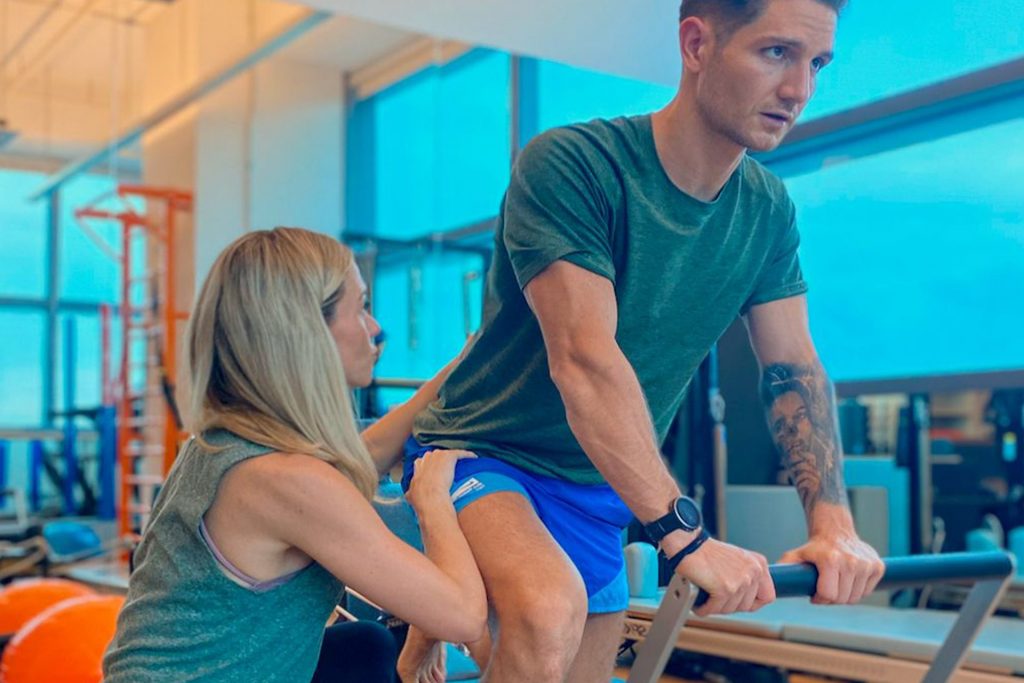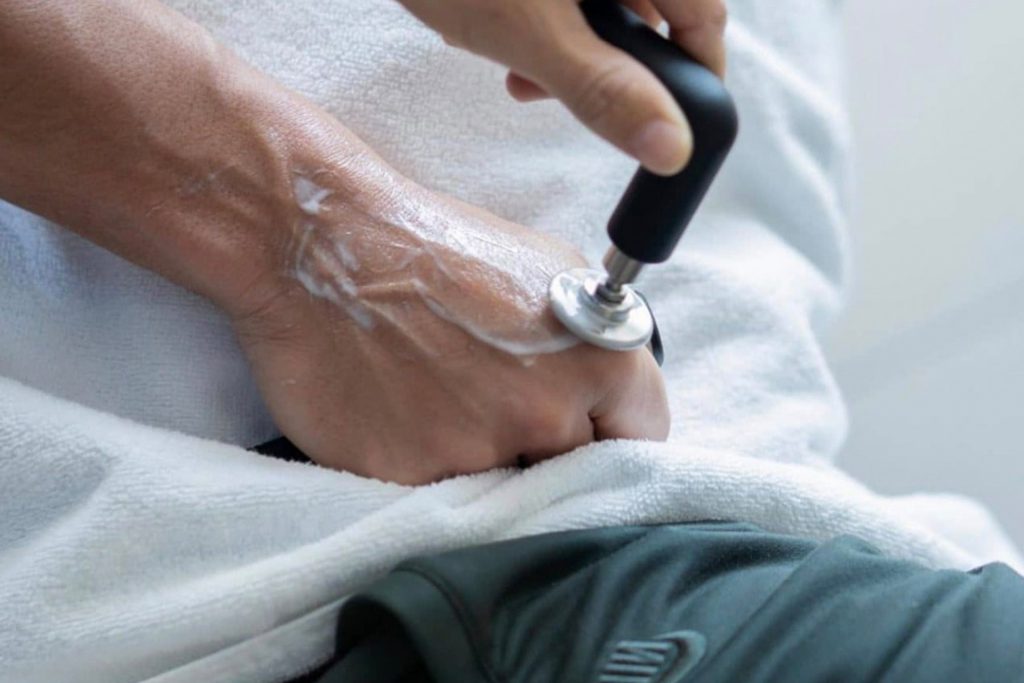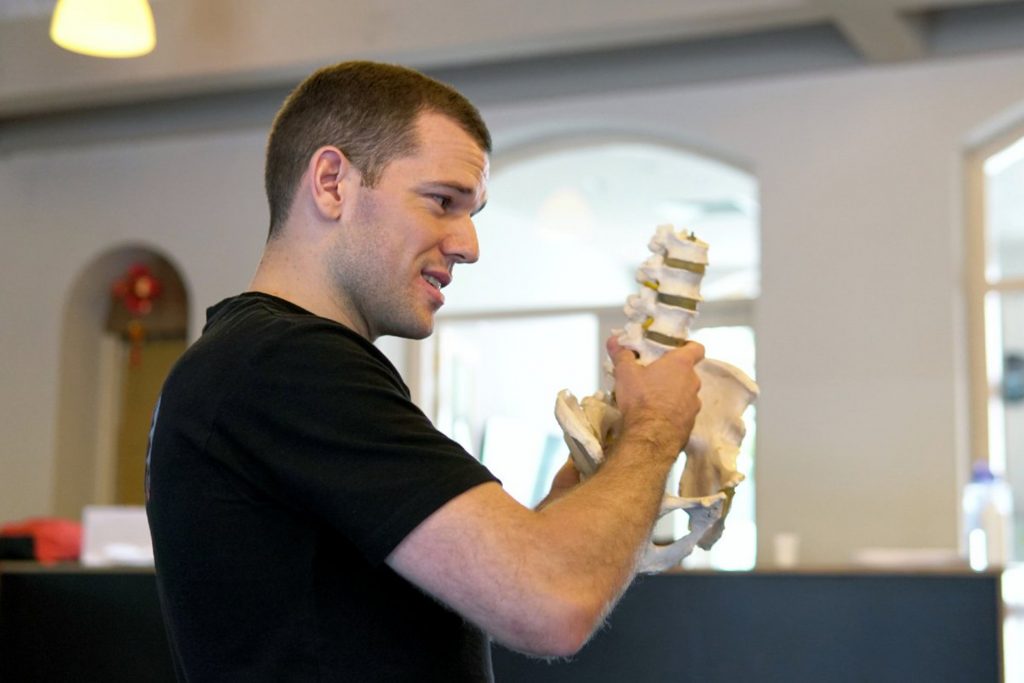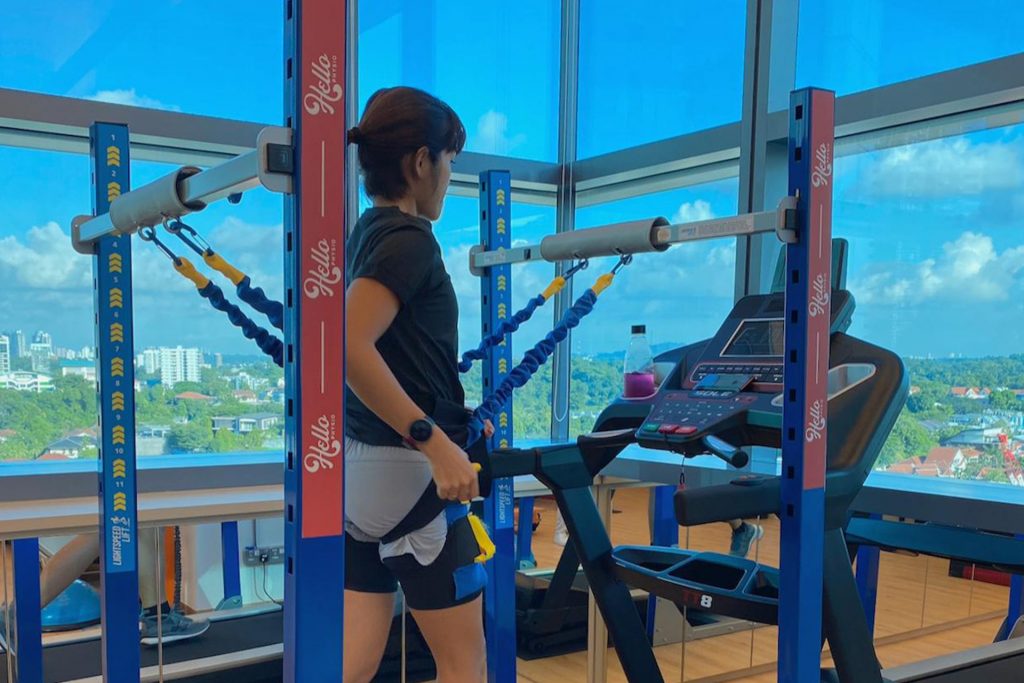|
Getting your Trinity Audio player ready...
|
Elbow pain is a common problem affecting people of all ages, from office workers to athletes, especially those who do daily activities that involve repetitive arm movements. Whether it be dull ache, sharp pain or stiffness, elbow pain can stop you from working, exercising or enjoying your day. Fortunately, physiotherapy offers evidence-based solutions for elbow pain relief that address both symptoms and underlying causes.
What Are the Causes of Elbow Pain?
The elbow joint is a complex structure that connects the upper arm bone (humerus) to the two bones of the forearm (ulna and radius). The joint acts as a hinge, allowing flexion, extension and rotational movement. It is surrounded by cartilage, ligaments and tendons that can become damaged or inflamed, causing pain and stiffness. Due to its constant use, the elbow is prone to many conditions that can cause discomfort. Some of the most common elbow pain conditions are:
- Tennis Elbow (Lateral Epicondylitis): Despite the name, this condition isn’t exclusive to tennis players. Repetitive strain on the forearm extensor tendons, for any reason, can cause individuals to develop tennis elbow and pain on the outside of the elbow.
- Golfer’s Elbow (Medial Epicondylitis): This condition, also known as medial epicondylitis, affects the tendons inside the elbow, usually caused by repetitive gripping or wrist flexion activities, common in golf.
- Elbow Bursitis: Inflammation of the bursa – a small fluid-filled sac cushions the elbow joint – can cause swelling and pain, often due to prolonged pressure or trauma.
- Osteoarthritis: Degenerative changes in the elbow joint cartilage from osteoarthritis can cause stiffness, swelling and pain, especially in older adults.
- Nerve Compression (e.g. Cubital Tunnel Syndrome): Compression of the ulnar nerve near the elbow can cause numbness, tingling and pain that radiates down the forearm and hand.
- Elbow Sprains and Strains: Overuse, sudden impact or improper lifting can strain the ligaments and muscles around the elbow. These injuries are often caused by sports activities or physical labor.
Knowing the exact cause of elbow pain is key to proper treatment. A physiotherapist can do a thorough assessment to determine the underlying cause and create a personalized treatment plan.

Overuse and Repetitive Strain
Overuse and repetitive strain are the most common causes of elbow joint pain. Activities that involve repetitive movements like throwing, lifting or bending can put excessive stress on the elbow joint. This type of injury is common among athletes who engage in tennis, golf and badminton, where repetitive arm movements are frequent.
Overuse injuries are not limited to athletes. Individuals who do repetitive tasks, like assembly line workers or musicians, are also at risk. The constant strain on the elbow joint from these activities can cause chronic pain and stiffness, so addressing these issues is essential to prevent long-term damage.
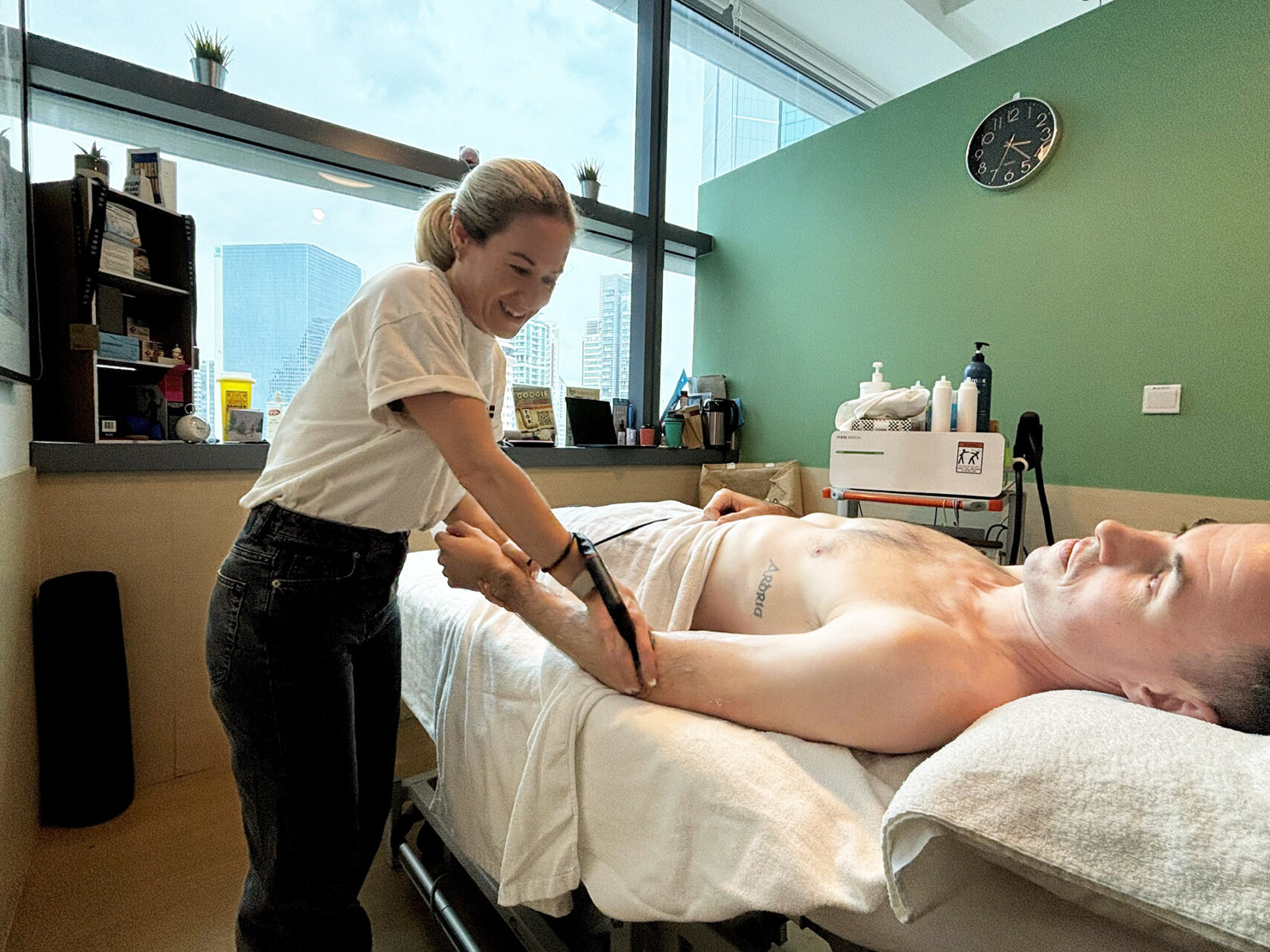
Injury and Trauma
Injury and trauma are also likely contributors to elbow joint pain. A sudden blow to the elbow or a fall onto an outstretched hand can cause fractures or dislocations of the elbow joint.
In addition to acute injuries, chronic elbow joint pain can also arise from repetitive trauma. Overuse injuries where the elbow joint is subjected to continuous strain can cause inflammation and persistent pain. Addressing these injuries early is crucial to prevent the development of chronic conditions that can severely impact mobility and quality of life.
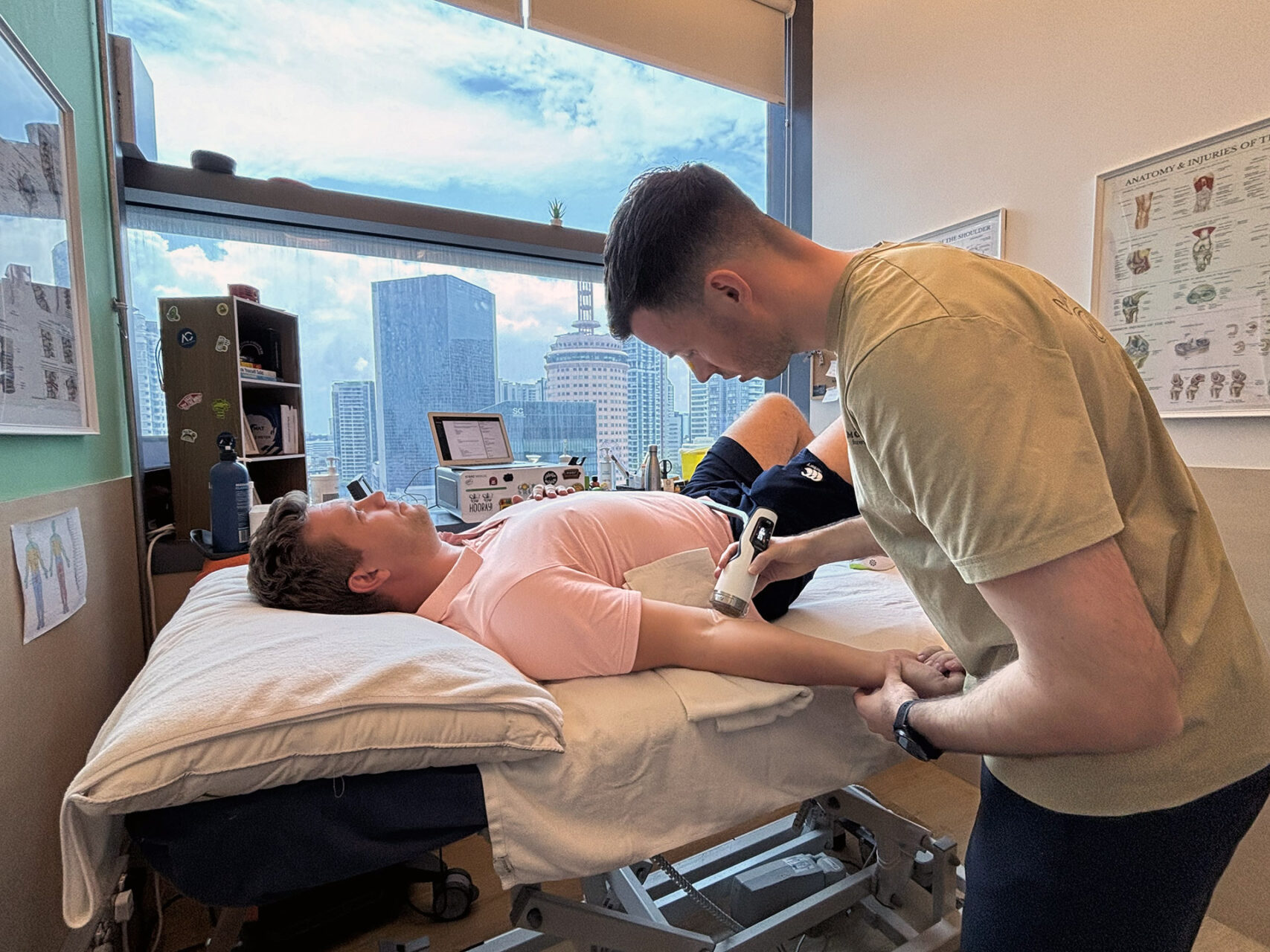
Elbow Pain Physiotherapy Treatment
Physiotherapy significantly manages elbow pain, offering non-invasive, evidence-based solutions to promote recovery, improve mobility, and prevent the recurrence of elbow pain. A physiotherapist can provide many intervention strategies for elbow pain, depending on the cause and symptoms of your condition.
At HelloPhysio, our approach to elbow pain causes and treatment is personalized care and attention that addresses symptoms while managing underlying factors.
1. Pain Management and Inflammation Control
The first step of physiotherapy is to reduce pain and inflammation. This may involve gentle mobilization techniques to improve joint movement and relieve tension in surrounding muscles. Modalities like INDIBA® Activ and ultrasound therapy promote cellular healing, reducing inflammation. Tennis elbow symptoms like pain and tenderness on the outer part of the elbow can be managed through these physiotherapy techniques, which can help alleviate the strain on forearm muscles.
2. Restoring Mobility and Flexibility
Once pain subsides, restoring the full range of motion becomes the next priority. Physiotherapists will guide patients through specific elbow pain exercises, including gentle stretching to improve flexibility in the forearm, wrist and elbow muscles. Joint mobilization techniques also improve joint glide and overall movement without discomfort. Addressing tightness in surrounding muscles through soft tissue release can also ease elbow strain.
3. Strengthening and Stabilization
Building strength around the elbow joint is key to long-term recovery and injury prevention. Physiotherapists focus on isometric exercises with low impact that engage the muscles without moving the joint, which is ideal for early-stage rehabilitation. Resistance band exercises target the forearm and wrist muscles and support the elbow. Functional training exercises are tailored to daily activities or sports to withstand regular demands.
Effective exercises for managing elbow pain include:
- Wrist Extensor Stretch, where you extend one arm forward, palm down, and gently pull back the fingers with the other hand until a forearm stretch is felt.
- Wrist Flexor Stretch is similar to the wrist extensor stretch, except with the palm up and pulling back the fingers to stretch the underside of the forearm.
- Forearm Pronation and Supination are done by holding a light dumbbell and rotating the forearm from palm up to palm down to strengthen forearm muscles.
- Eccentric Wrist Extensions, where you slowly lower the wrist while holding a light weight after extending it upward, focusing on controlled movement.
Do these exercises under the guidance of a physiotherapist to ensure proper form, reduce strain and promote long-term elbow health.

Advanced Modalities for Faster Recovery from Tennis Elbow
For persistent or severe cases, adjunctive treatments can speed up healing and provide effective elbow pain relief:
- Shockwave Therapy: This non-invasive treatment uses acoustic waves to stimulate tissue repair, break down scar tissue and improve blood flow. It is particularly effective for conditions like tennis elbow and golfer’s elbow.
- INDIBA® Activ: This radiofrequency therapy enhances cellular regeneration, reduces inflammation, improves tissue oxygenation, and promotes faster recovery.
- Dry Needling: Targeting trigger points in the muscles through sterilized needles can relieve muscle tension and improve mobility.
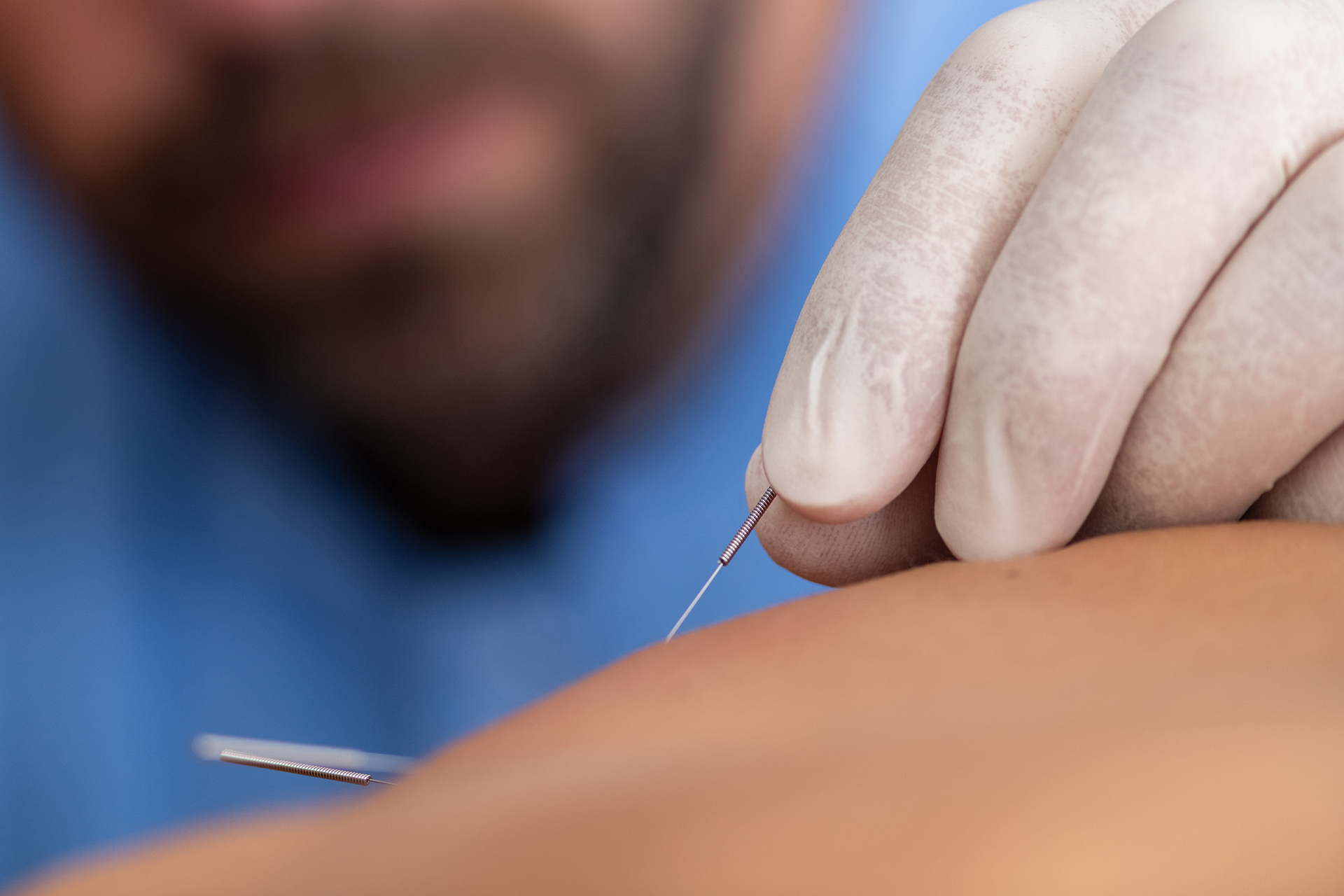
Preventing Elbow Pain for Long-Term Elbow Joint Health
While physiotherapy addresses elbow pain causes, prevention is key to long-term elbow health. Correct ergonomics is key. If repetitive motion at work causes your elbow pain, set up your workstation properly to reduce strain on the elbows and wrists and avoid overuse injuries. Warming up before and cooling down after physical activities prepares the forearm muscles for movement and prevents stiffness after exercise. Gradually increasing the intensity of activities is equally important, as sudden spikes in workload can overload the elbow joint and lead to injury.
Regular strength training in your routine builds muscle balance and joint stability, giving the elbow the support it needs to withstand daily demands. Incorporating these preventive measures can reduce the risk of elbow pain and promote long-term joint health.
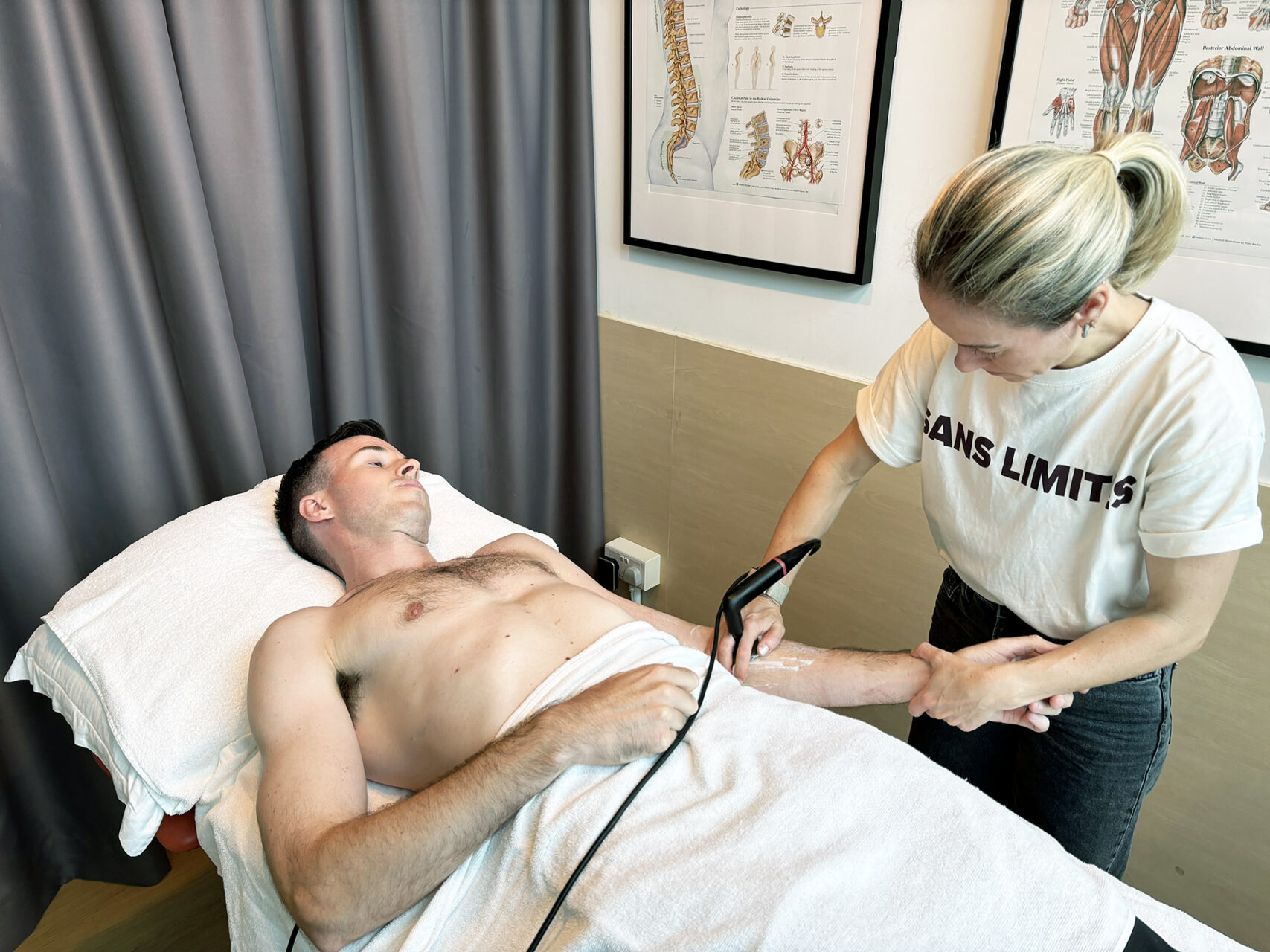
When to See a Physiotherapist for Elbow Pain
If elbow pain lasts more than a few days, worsens with movement, or affects your daily activities, it’s time to see a professional. Ignoring elbow pain can lead to chronic conditions, a lengthy recovery, and even permanent damage in severe cases.
At HelloPhysio, we specialise in elbow pain treatment in Singapore. We customize physiotherapy plans that combine manual therapy, advanced modalities and exercise programs suited for your personal needs. Book an appointment with us today and start your journey to elbow pain relief.

